Items
topic_interest is exactly
rural
-
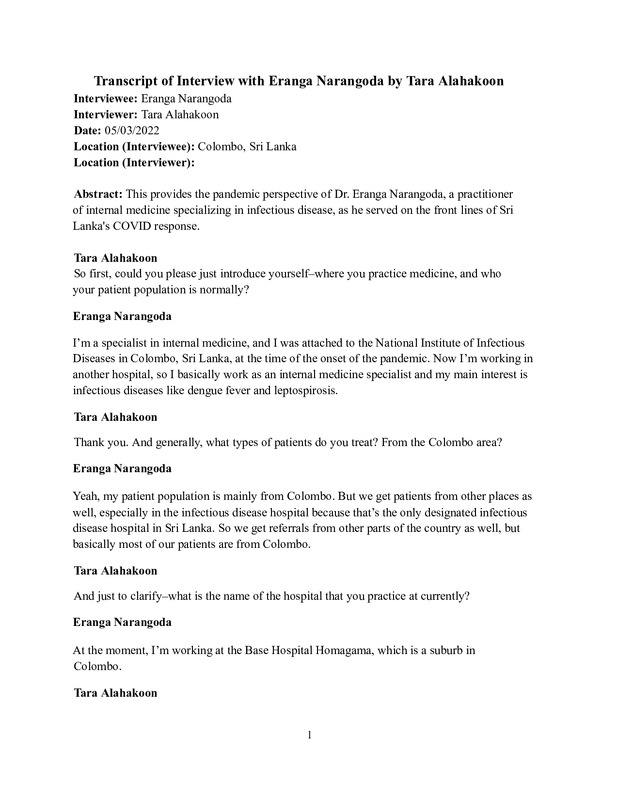 2022-05-03
2022-05-03Eranga Narangoda Oral History, 2022/05/03
It provides the pandemic perspective of Dr. Eranga Narangoda, a practitioner of internal medicine specializing in infectious disease, as he served on the front lines of Sri Lanka's COVID response. -
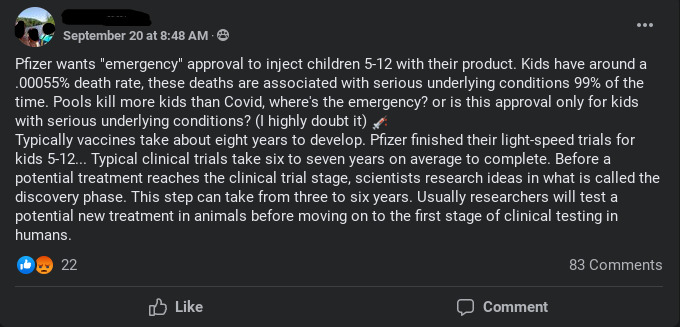 2021-09-20
2021-09-20Vaccine Doubters
I have a screenshot of several anti-vax debates from my town's FB group. The poster was against vaccinating kids. -
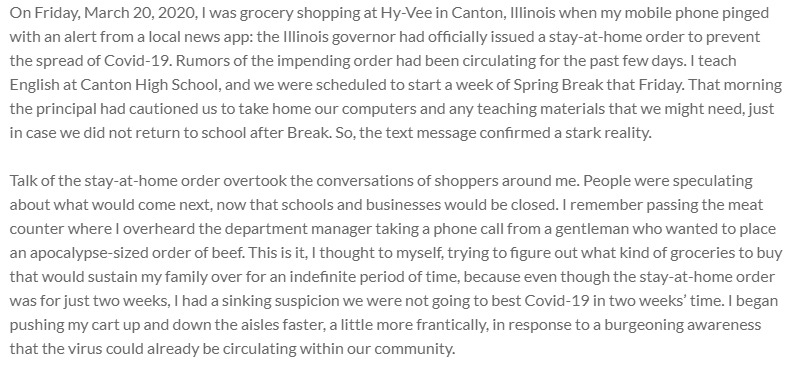 2020-03-20
2020-03-20The Signal of Approaching Silence
On Friday, March 20, 2020, I was grocery shopping at Hy-Vee in Canton, Illinois when my mobile phone pinged with an alert from a local news app: the Illinois governor had officially issued a stay-at-home order to prevent the spread of Covid-19. Rumors of the impending order had been circulating for the past few days. I teach English at Canton High School, and we were scheduled to start a week of Spring Break that Friday. That morning the principal had cautioned us to take home our computers and any teaching materials that we might need, just in case we did not return to school after Break. So, the text message confirmed a stark reality. Talk of the stay-at-home order overtook the conversations of shoppers around me. People were speculating about what would come next, now that schools and businesses would be closed. I remember passing the meat counter where I overheard the department manager taking a phone call from a gentleman who wanted to place an apocalypse-sized order of beef. This is it, I thought to myself, trying to figure out what kind of groceries to buy that would sustain my family over for an indefinite period of time, because even though the stay-at-home order was for just two weeks, I had a sinking suspicion we were not going to best Covid-19 in two weeks’ time. I began pushing my cart up and down the aisles faster, a little more frantically, in response to a burgeoning awareness that the virus could already be circulating within our community. Looking back now, I see that we were somewhat cocooned in Fulton County, Illinois, a mostly rural county. The health department announced the first positive case on April 10; the first death occurred on October 21. The virus was slow to take a foothold, but eventually it did. In late July, our school district’s board unanimously voted to start the school year fully remote. Each school day, teachers reported to ghost-town school buildings and holed up in their empty classrooms, with admonitions from administrators not to co-mingle with each other. During that time, I dutifully logged onto Google Meets for each class period, where various avatars greeted me because students were not required to turn on their cameras, so none did. Sometimes I got to hear tinny student voices, which sounded a lot further away than across town, and I wondered if each voice matched the person I pictured in my mind’s eye. I had never met the majority of my students in person, and the photographs on our school’s student management system had not been updated since the fall of 2019. I remember the frustration I struggled to keep capped when I would call on students and be met with silence. Were they even sitting by the computer? Were they afraid to say something in front of their classmates, lest they look stupid? Were they just willfully ignoring me? Were they okay, physically and mentally? I pulled more words out of students through written assignments and chat boxes than through Google Meets. Although part of the student body returned to in-person school in January of 2021 while the rest remained remote by choice (we taught both groups concurrently), it was still difficult to get students to speak, even to each other. Sadly, many of our students had become so accustomed to the idea of school as a radio broadcast—one from which they could easily disengage if they so wished—that they no longer felt it necessary to contribute their voices. In Illinois, we’ve been told that all students will return to in-person learning in the fall of 2021, with few exceptions, but I fear the virus has done irrevocable damage to our students’ speech. -
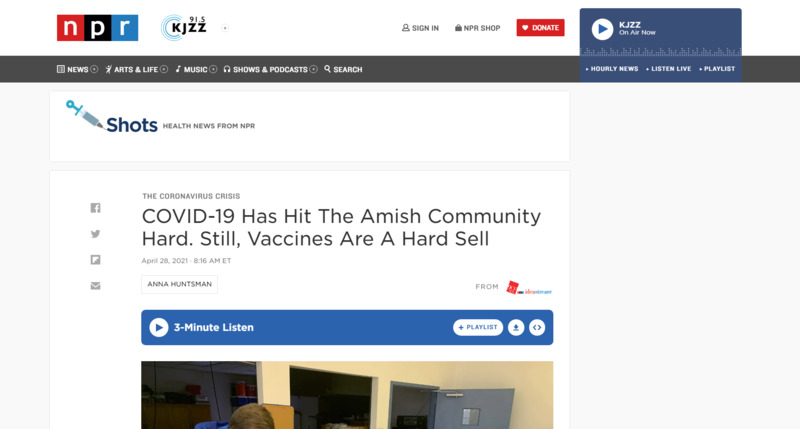 2021-04-28
2021-04-28COVID-19 Has Hit The Amish Community Hard. Still, Vaccines Are A Hard Sell
Officials are having a hard time convincing Amish populations to get the COVID-19 vaccine. This has been attributed to cultural differences and it's believed they'll start getting the vaccine once it's been around for some time. In the meantime, there are fears that the communities will have more COVID-19 outbreaks. -
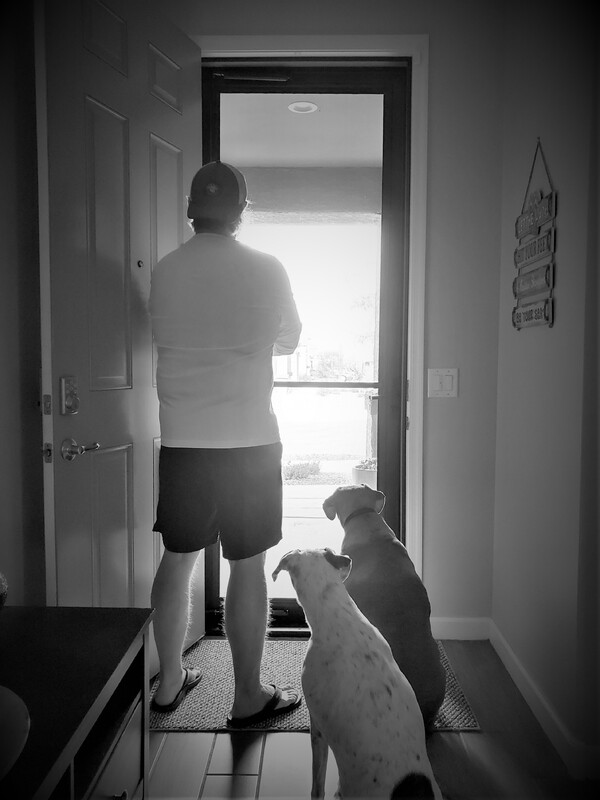 2021-04-21
2021-04-21James Rayroux's JOTPY Portfolio
--Reflections on the Pandemic Archive-- Looking back over my experience with the “Journal of the Plague Year” COVID-19 archive, my prevailing emotion is gratitude. This opportunity granted me experience that few historians earn, and the remote, asynchronous work schedule allowed me to collaborate with my colleagues in ways that maximized our respective contributions. The breadth and depth of our individual experiences and perspectives tremendously improved our collective process and products. I spent enough time in the Arizona State Archives last year to recognize such collections as historical treasure chests, but I have now participated in processing an archive’s content and navigating the ethical dilemmas those submissions sometimes create. Archivists and curators are the history profession’s truly unsung heroes, and their work facilitates society’s perception of itself. My background in police work and public safety drew me to the archive’s existing Law Enforcement collection. In taking on that subset, I succeeded in reshaping the collection’s parameters to now include stories about police and law enforcement. I wanted to diversify the collection to encompass perspective of both the police and the public with whom they interact and serve. While some overlap exists between the Law Enforcement and Social Justice collections, each remains distinct. Through my contacts and writing, I promoted a Call for Submissions to an international audience of law enforcement professionals to reduce their relative silence within the archive. Within the archive’s content, I recognized that one’s location might shape their pandemic experience, and I created and designed an Arizona-based exhibit to explore that. Further research and discussion with my mentors and colleagues ensured the exhibit illustrated these differences without excluding visitors whose diverse experiences could further enrich the archived and exhibited content. I am proud of my “Arizona’s COVID-19 Pandemics” exhibit, particularly because of its compressed, one-month incubation period. Beyond displaying images, data, and stories representative of the diverse pandemic experiences within the state, the ACP exhibit offers visitors numerous levels of interaction and engagement to became active participants and create their own exhibit experience. Visitors can complete opinion surveys, add a story to the archive, explore additional content related to the displayed pieces, view ever-changing results from pre-defined archival content searches, conduct their own archival search, view collective visitor survey results, and apply to join the staff. The exhibit’s searches will include the archive’s future submissions, which reshapes both the exhibit and the experience visitors may have with it. A more detailed explanation of my ACP exhibit may be reviewed here: https://covid-19archive.org/s/archive/item/43037 Because of Dr. Kathleen Kole de Peralta and Dr. Mark Tebeau, I stand prepared to join research, curation, and exhibition teams and immediately contribute to their work products. Despite my gratitude for this experience and the opportunities it presented, I look forward to the day COVID-19 is no longer part of humanity’s daily vernacular. James Rayroux 22 April 2021 -
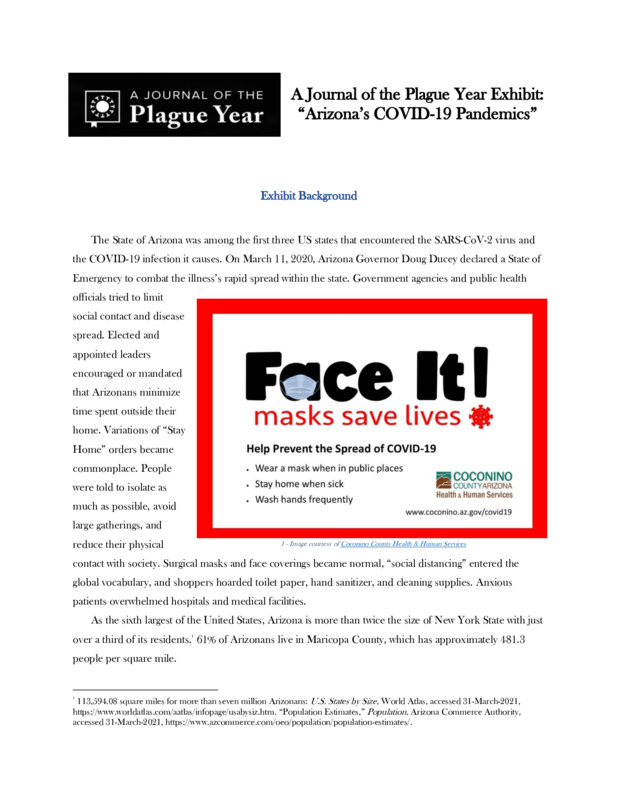 2021-04-20
2021-04-20JOTPY Exhibit: "Arizona's COVID-19 Pandemics" by James Rayroux
While working as a curatorial intern on ASU's 'A Journal of the Plague Year' COVID-19 archive, I created this exhibit on the pandemic experience within the state. In addition to obvious, overarching realities such as socioeconomic status and immediate access to healthcare systems, I initially believed one of the greatest deciding factors that determined one's experience in Arizona was an individual's residence in either predominantly urban or rural environments. The proposed exhibit had been originally titled "A Tale of Two Arizonas" to pay respect to Charles Dickens and the differing realities experienced here. To test my proposed hypothesis, I went about finding data, stories, and submissions that substantiated or disputed my premise. Within a short time, I had identified four distinct environmental drivers of personal pandemic experiences; to me, that indicated the existence of many more I hadn't yet found or had overlooked along the way. My evidence suggested a minimum of four pandemic locales: Urban, Rural, Border, and Tribal within the State of Arizona and its fifteen counties. The recorded health data and personal experiences demonstrated the naivete of my initial hypothesis, and I retitled the exhibit: "Arizona's COVID-19 Pandemics." The Exhibit Background section illustrates the vast dichotomies within Arizona in terms of population density and access to healthcare facilities. Given the virus's respiratory nature, these factors seemed especially relevant to driving diverse local experiences. I chose to include a flyer from the Coconino County Health and Human Services' "Face It! Masks Save Lives" campaign. The flyer included a specific line to "Stay Home When Sick" that seemed to illustrate a different public health paradigm than the broader "stay home" orders from Maricopa and Pima county. This section also features an image of Sedona's red rocks and a portion of The Wave to remind visitors of the wide-open rural areas accessible to all, as well as those with cultural significance to the Native American tribes and limited access to the general public. The next section asks a short, five-question survey in which visitors may participate. The Silver Linings piece features a short audio clip of a father and husband discussing some unexpected benefits of the pandemic. Visitors may explore additional Silver Linings stories and submit their own experience. The Tséhootsooí Medical Center piece seeks to illustrate the different pandemic experience on the state's tribal lands. I hoped to inspire some relevant emotional turmoil for the visitors through the piece's visual presentation. I wanted to create a series of waves with quotes from the medical center's healthcare workers. I hoped visitors' attention would be drawn to the large, bolded key words, and that they would first experience the segments out of sequence because of that. After potentially feeling a sense of chaos, they might settle themselves into a deliberate reading of the texts and find their own order within the experiences provided here. This piece allows further exploration of Native submissions and topics, a review of an additional related news article, and a submission prompt that invites visitors to offer guidance to hospital managers. The next piece illustrates the differences between mask mandates in communities across Arizona. In addition to hearing an audio clip of interviews with mayors and a public health official, visitors can explore additional submissions related to mask mandates and submit their thoughts on statewide mandates. The Arizona Department of Health Services provides zip-code specific infection data on its website, and the wide array of known case infections therein further illustrates potential dichotomies across the state. In working to include and represent this data in a consumable way, I encountered inconsistencies with tribal data. The nation's Indian tribes are overseen by Indian Health Services, a federal public health agency, and it does not collect or report data in the same manner as the State of Arizona or its counties. At first glance, the data would seem to suggest that tribal areas had less severe pandemic experiences than the rural and urban areas, which was not objectively true. I wanted to offer the unedited data to visitors, allow them to drawn their own conclusions, and invite them to offer their thoughts on what potential misunderstandings might emanate from these reporting differences. Visitors may also choose to review the foundational data from this piece, as well. I used the following two sections to offer submission prompts about the visitor's overall pandemic experience as a function of their location, as well as what they might have done if placed in charge of their city, county, or state during this pandemic. A diverse Search section allows visitors to explore additional topics of interest to them. 23 hyperlinks offer pre-defined search parameters. An Advanced Search link allows self-defined research, and a Join The Staff link connects visitors with opportunities to work within the JOTPY archive. A final section asks visitors to provide feedback on the exhibit, its content, and the pandemic in general. Both surveys within the exhibit will display overall results to visitors who participate in them. Through this process, I found incredible amounts and diversity of data outside the archive that spoke to these generally localized experiences, but not that much yet within the archive explained what Arizonans had experienced outside the state's urban environments. I created a call for submissions and delivered it to fifty rural entities that might help support the effort to collect and preserve more rural Arizona stories. Between all the local libraries, historical societies, museums, small-town mayors, and county health officials to whom I asked for help, I am optimistic the archive will better represent all Arizonans in the coming months and years. Despite the exhibit having been created, I ensured its internal search features would include future submissions and allow the exhibit to remain relevant long after its release. -
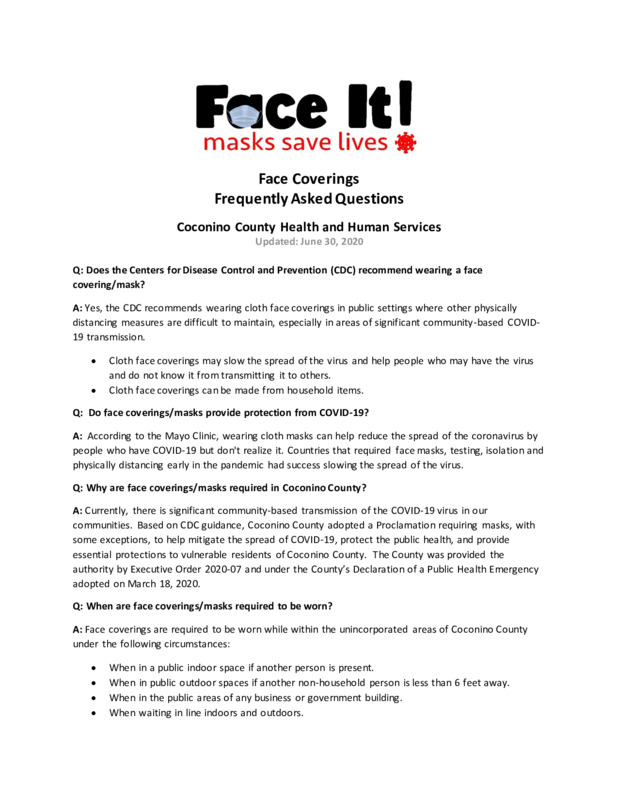 2021-04-20
2021-04-20Northern Arizona's Coconino County "Face It" Mask Campaign and Online Toolbox
The Coconino County Health & Human Services department created its "Face It" campaign in 2020 to promote the use of masks and face coverings in their communities. The following webpage is for the campaign's digital "toolbox" to give the public access to official signage for display to customers, the public, and employees to address mask use issues. -
 2021-04-19
2021-04-19Navajo Department of Health COVID-19 Case Infection Data by Region through 19 April 2021
This image, taken as a screenshot from the Navajo Department of Health website on 19 April 2021, shows COVID-19 infection case data by region within the Navajo Nation. -
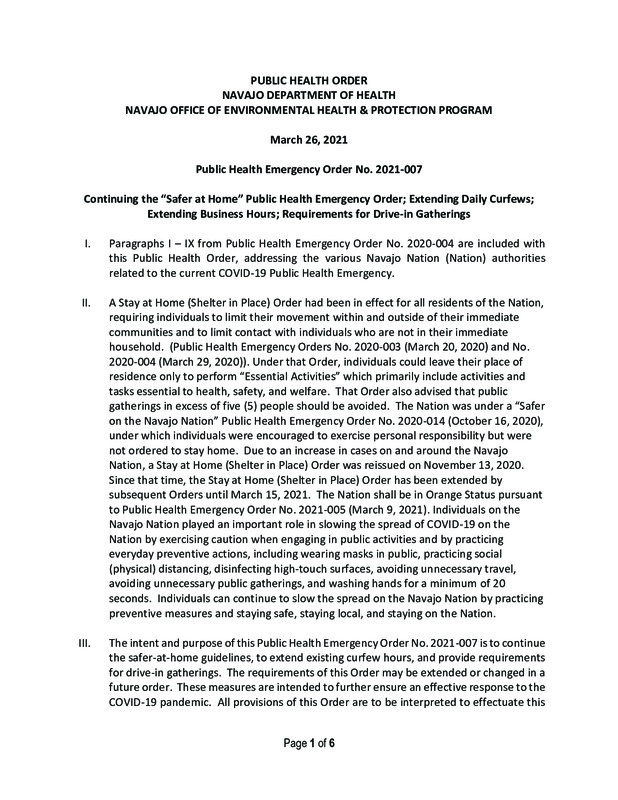 2021-04-19
2021-04-19Navajo Department of Health Public Health Emergency Orders through 19 April 2021
These eight documents are the eight Public Health Emergency Orders issued by the Navajo Department of Health issued through 19 April 2021. -
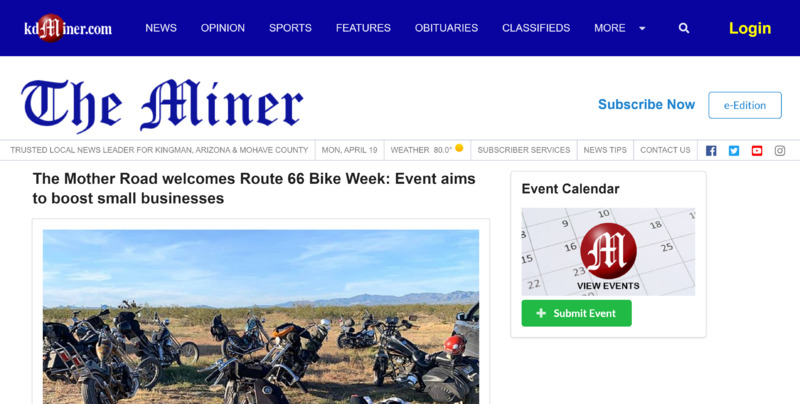 2021-04-15
2021-04-15News Article: The Mother Road welcomes Route 66 Bike Week: Event aims to boost small businesses
By Travis Rains, Kingman Daily Miner, 15 April 2021 Communities and businesses along and near the Mother Road wanted in on the action that is Route 66 Bike Week – five days of activities, games, discounts, scenic biking and more set for April 21-25 along the historic highway from Needles, California to Seligman. Event organizer Rob Borden is no stranger to motorcycle rallies as the owner of Saddle Sore Ranch, located between mile markers 36 and 37 on Route 66, approximately 17 miles from Kingman. But this is the first year for Route 66 Bike Week, which has seen the expansion of what has been dubbed the “Laughlin Loop.” “It kind of started by accident,” Borden said, noting the loop includes Route 66, going through Oatman and down over highways 95 and 68. “It’s just a nice, scenic ride for motorcycle enthusiasts. With the Laughlin River Run not happening, at least not in the past two years, I got a call from Needles, California from their tourism center asking if they could be included in this Laughlin Loop and I said ‘absolutely.’” Borden then received a call from the chamber of commerce in Oatman seeking to be included in the event. Then the City of Kingman and its visitor’s center wanted on board, followed by Seligman. “So then I’m looking at it and I’m like ‘wow, Needles to Seligman,’” Borden said. “I said ‘why don’t I just do a Route 66 Bike Week,’ and that’s how it happened. That way we can promote all these small businesses down Route 66 that even in normal times they struggle. Now with COVID, of course, they’ve been struggling even more.” So Borden began reaching out to businesses along Route 66 to see if they would be interested in participating by way of deals and discounts for event participants. “They loved the idea and wanted to be a part of it,” he said. “Basically, the idea is rather than just have a stationary event that’s confined to some big parking lot, let’s kind of highlight these businesses up and down Route 66 and get them involved. They’ve put together special offers and discounts, maybe extra effort for bands for bars. Those are different stops on the rally.” Registration for bike week can be completed by going to http://route66bikeweek.com/, with prices ranging from $45 to $48 depending on the package chosen. Borden said there is associated costs for the event that include T-shirts, bike week wristbands and dissemination of the Route 66 Passport, the latter two providing participants with access to discounts from businesses and drawings for prizes, respectively. “So when you show up with your bike week wristband, you’ll get freebies and discounts,” Borden explained. “We’ve got about 20 free drawing stops.” A scavenger hunt is planned as well utilizing the Route 66 Passport. Borden said there will be five different stops along Route 66 at which participants can have their passports stamped. Upon getting all the stamps and presenting them at Rally Central, which is Saddle Sore Ranch, they will receive a free ticket for yet another drawing. Borden also said those wishing to cruise Route 66 during bike week don’t have to register, but that they will not receive access to discounts and more. “The intent there is obviously to bring exposure to Route 66 and all these businesses, and make a big financial impact right here to the area as opposed to some of the big corporate vendors that would come into big motorcycle events,” Borden said. “When they leave, they take the money with them.” Saddle Sore Ranch will play host to biker games and activities throughout Route 66 Bike Week. Those will include poker runs, live music and popular biker contests like a big belly contest. Biker games such as slow races, barrel races, lean-your-bike and more are scheduled as well, as is a blue collar build-off judging and awards ceremony sponsored in part by Cycle Source Magazine. The build-off is a low-budget motorcycle building competition where teams from all over the country had $1,500 and 30 days to build a bike. After the sun goes down, live music will continue, vendors will open up shop and a campfire party will commence. “It’s a lot different than what people are used to with previous motorcycle rallies in the area,” Borden said of Saddle Sore Ranch. “Our venue is more reminiscent of a ‘60s or ‘70s style, easy rider rodeo kind of venue. It’s more of a traditional, old-school biker venue as opposed to the neon lights and things like that of Laughlin. It’s a completely different kind of feel and a breath of fresh air for bikers in the area to give them something to do and something different.” Route 66 Bike Week starts at 10 a.m. Wednesday, April 21 and runs until 10 p.m. Sunday, April 25. For more information on Route 66 Bike Week, go to http://route66bikeweek.com/. -
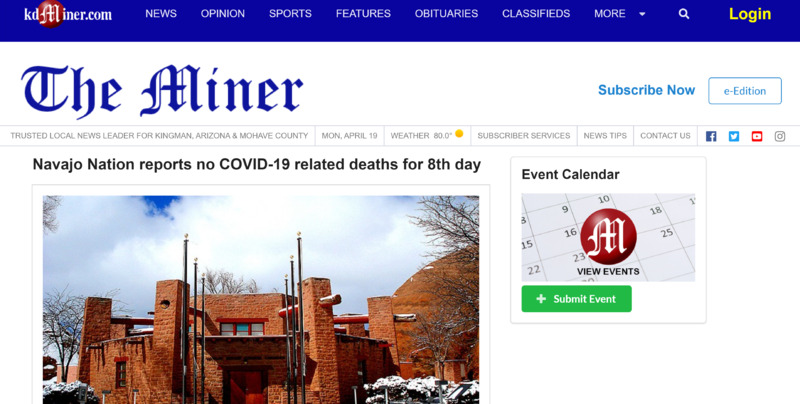 2021-04-19
2021-04-19News Article: Navajo Nation reports no COVID-19 deaths for 8th day
By Associated Press, 19 April 2021 WINDOW ROCK (AP) — The Navajo Nation is finding no new COVID-19 related deaths for an eighth consecutive day. The tribe on Sunday afternoon reported seven new virus cases but no additional deaths on the vast reservation. The latest numbers bring the Navajo Nation's pandemic case total to 30,366 with the death toll remaining at 1,262. Tribal officials said 16,477 people have recovered from COVID-19 thus far. The tribe had been easing into reopening but that slowed somewhat after coronavirus variants were confirmed on the reservation, which stretches into New Mexico, Utah and Arizona. Tribal officials urged residents to stay vigilant. Navajo President Jonathan Nez said the tribe recently had a cluster of COVID-19 cases as a result of a family gathering where people were not wearing masks. Tribal public health orders mandate that masks be worn on the reservation and a daily curfew is in effect. Restaurants cannot have dine-in services. Navajo Nation roads also are closed to visitors and tourists, which doesn’t affect travel on state highways that run through the reservation. Meanwhile, health care facilities across the reservation continue to offer the vaccine by appointment or at drive-thru events. -
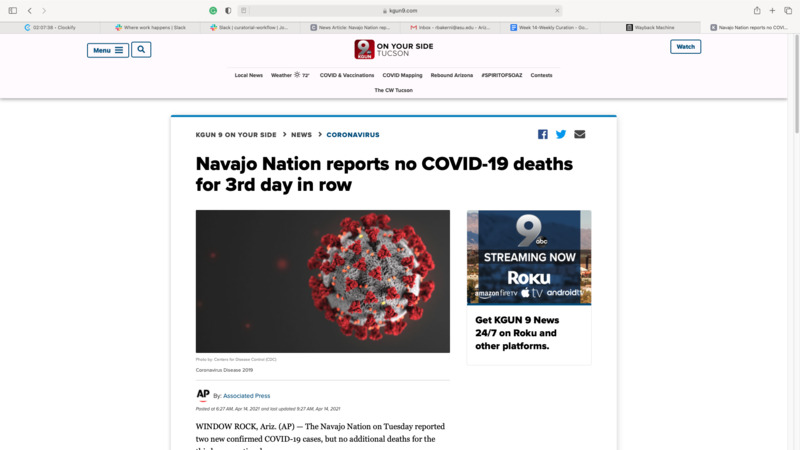 2021-04-14
2021-04-14News Article: Navajo Nation reports no COVID-19 deaths for 3rd day in row
Despite very grim months through the last year's COVID-19 pandemic in the Navajo Nation, the Associated Press reported continuing indications of success for the Navajo people and their rural communities: WINDOW ROCK, Ariz. (AP) — The Navajo Nation on Tuesday reported two new confirmed COVID-19 cases, but no additional deaths for the third consecutive day. The latest numbers brought the pandemic totals on the tribe’s reservation to 30,269 cases and 1,262 known deaths. Tribal officials had ordered a lockdown last weekend over fears that a new variant could drive another deadly surge. The Stay-At-Home order required all Navajo Nation residents to refrain from unnecessary travel to help limit the spread of the virus, including a new and more contagious strain. Navajo Nation President Jonathan Nez recently announced the first confirmed case of the COVID-19 B.1.429 variant on the reservation that covers parts of Arizona, New Mexico and Utah. -
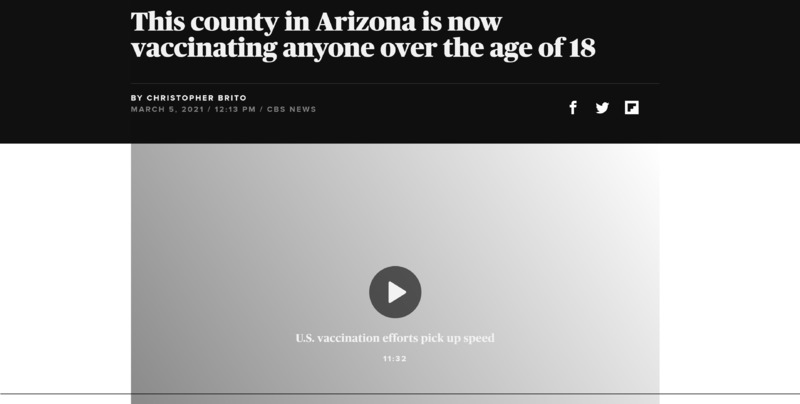 2021-03-05
2021-03-05News Article: Gila County's COVID-19 efforts lead more urban counties
"By Christopher Brito, March 5, 2021, CBSnews.com While a majority of states and cities are still vaccinating higher priority groups of people, one county in Arizona is now allowing any resident over the age of 18 to receive the COVID-19 vaccine. Gila County, which is located east of Phoenix, entered Phase 2 of their vaccine prioritization late last month, opening up eligibility to the general population. Part of the the decision to open vaccine eligibility is because Gila County has one of the lowest percentages of COVID-19 vaccine doses used in Arizona. Michael O'Driscoll, director of Public Health and Emergency Management for the county, told CBS affiliate KPHO-TV that they received permission from the state last week to offer the vaccine in a drive-thru clinic last weekend. "Prior to that, we were struggling to find enough people to make appointments to that, so the state gave me permission to offer it to any resident 18 and older," he said. About 56,000 people reside in the county. According to the Arizona's Department of Health Services, more than 13,000 people – or almost one fourth of residents – have received at least one dose of the COVID-19 vaccine. "We did a survey before to get a sense of how many people in Gila County would consider getting the vaccine, and our survey came back about 50-60% of the residents would choose to get the vaccine if available," O'Driscoll said. Based on the data, over 5,600 people under the age of 65 have received the vaccine, including 73 people under the age of 20. One of the younger recipients, 18-year-old Jacob Jost, told KPHO-TV that he was "excited" to get the shot. "I have a little nephew, a little baby, so having the vaccine puts a peace of mind for that," Jost said. First published on March 5, 2021 / 12:13 PM © 2021 CBS Interactive Inc. All Rights Reserved. Christopher Brito is a social media producer and trending writer for CBS News, focusing on sports and stories that involve issues of race and culture. -
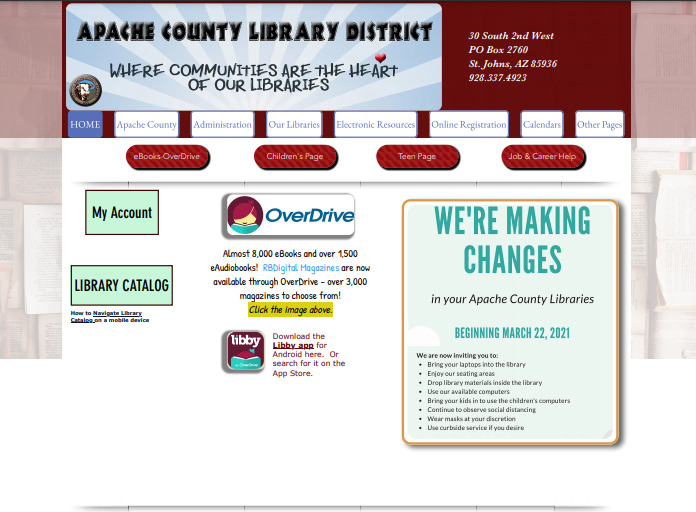 2021-03-22
2021-03-22Apache County (AZ) Library COVID-19 Guidelines after March 22, 2021
This copyright-free image of a public-facing government webpage displays the COVID-19 protocols in place at Apache County (AZ) library locations after Governor Doug Ducey ordered local governments to phase out public health mandates on March 22, 2021. Unlike urban areas within the state, rural Apache County in northeastern Arizona no longer required mask use inside private or government (public) buildings and facilities. -
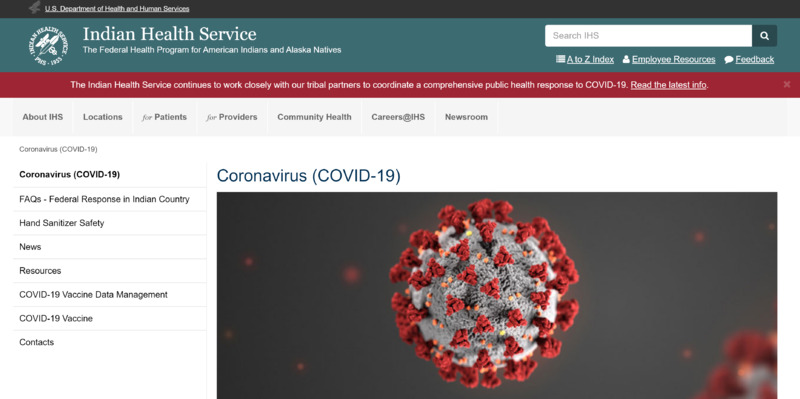 2021-04-07
2021-04-07Indian Health Services COVID-19 Infections by Service Area through 04/07/2021
Indian Health Services is an agency of the United States federal government that oversees and administers healthcare to that nation's Native American populations and tribal reservations. This webpage from the Indian Health Services has three sections that address general Coronavirus (COVID-19) information and links, COVID-19 Vaccine Distribution and Administration by IHS Area, and COVID-19 Cases by IHS Area. it also includes a hyperlink to an interactive map for up-to-date COVID-19 Cases by IHS Area: https://maps.ihs.gov/portal/apps/StoryMapBasic/index.html -
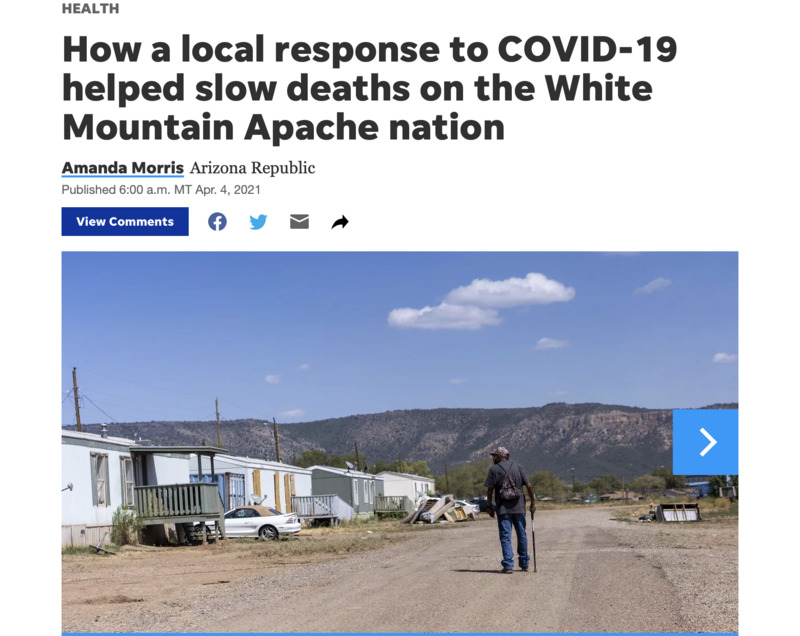 2021-04-04
2021-04-04News Article: How a local response to COVID-19 helped slow deaths on the White Mountain Apache nation
By Amanda Morris of the Arizona Republic: When someone on the Fort Apache Indian Reservation receives a confirmed diagnosis of COVID-19, health care workers from the Whiteriver Indian Hospital jump into action. They personally visit the individual's home to test other household members, perform health evaluations on everyone there and trace any other potential contacts at risk for COVID-19 exposure. Health care workers in the community say that could be one reason why, even though the rate of confirmed COVID-19 cases among White Mountain Apache tribal members is nearly triple the state's rate, the death rate is much lower and continues to fall. Over 90% of COVID-19 cases in the White Mountain community are investigated within 24 hours of testing, according to Ryan Close, the director of the Department of Preventative Medicine at the Whiteriver hospital, which is the only hospital on the 1.67 million-acre reservation. "I feel like what we did made a huge difference," Close said. "We evaluated and admitted people aggressively and early. The tribe deserves an incredible amount of credit for mobilizing staff ... to make this response possible, because at some point it would have been very difficult to maintain without their considerable help." The quick response may have also helped the tribe turn the tide against rapid community spread of the virus, which scientists say could have been fueled by a single variant found only in the White Mountain tribal communities. The variant carried a mutation in the spike protein, which scientist theorize could have made it spread more rapidly than other strains of the virus. The number of confirmed COVID-19 cases among White Mountain Apache tribal members accounts for 24% to 28% of their population, according to Close, but the cumulative death rate among known cases is only 1.2%. By comparison, the statewide rate of infection was 11.5% with a 2% death rate among known cases. And over the winter, Close said the rate for the tribe dropped even lower, to about 0.5%. In a community with a high number of individuals with underlying health conditions, the low death rate and work of the tribe has been "remarkable," said David Engelthaler, director of the Translational Genomics Research Institute's infectious disease division in Flagstaff. The death rate also stands out as unusually low when compared with death rates in other Indigenous communities. Indigenous populations have been disproportionally affected by the pandemic. CDC data shows that Indigenous people are 3.5 more likely to be diagnosed with COVID-19 and almost twice as likely to die from COVID-19 than white people. Close credits a proactive strategy to combat COVID-19 that involved rapid contact tracing, in-person health evaluations and frequent outreach to high-risk COVID-19-positive individuals as well as early treatment with monoclonal antibodies and other antiviral therapies. Volunteers and health workers from the White Mountain Apache community were on the Whiteriver hospital's contact tracing team and high-risk COVID-19 outreach team, which Close said helped the team connect better with the people and work faster. One essential part of the team are the tribe's community health representatives, or CHRs, who are members of the community that serve as a cultural bridge between patients and medical establishments. JT Nashio, director of the Community Health Representatives for the tribe, said the "visceral connection" that CHRs have to the community helps them bring cultural awareness to the way questions are asked for contact tracing, which makes the process more effective and allows officials to better distribute information. "On top of that, quite simply, they know how to get around. It’s a big reservation and not all homes are easy to find," Nashio said. "But when you’ve lived here your whole life, you know where to find people. That became invaluable during the tracing and testing push during case surges." Virus mutation may have made it more transmissible When COVID-19 hit the White Mountain Apache nation, it spread rapidly. The community's first documented case was on April 1, 2020, from someone who had likely recently visited the Phoenix area, unknowingly caught COVID-19 and returned, according to Engelthaler. Within the first few weeks, Close said the community experienced a handful of deaths. "We soon had incidence rates that were skyrocketing. Case counts were going up very, very quickly," Close said. It's unclear why the disease spread so rapidly in the community, but the initial strain of COVID-19 that hit the community carried a mutation that Engelthaler believes could have made it more transmissible. "They were seeing the virus just rip through and have an 80 to 90 to 100 percent attack rate," he said. TGen partnered with the tribe and the U.S. Indian Health Services early on to provide tests to diagnose a case of COVID-19 and provide genetic analysis of the virus from each case. It showed one strain of the virus circulating in the tribal community that wasn't present anywhere else in the state. "This virus moved much faster than anything else we were seeing in Arizona at the time," Engelthaler said. "So we actually believe that we had one of these variant strains in Arizona that was causing very large numbers of cases, but it was secluded and maintained really only in that tribal population." The mutation, called the H245Y mutation, occurred in the spike of the virus, which Englethaler said is a "very sensitive" part of the virus where mutations can have a significant impact. Because of the low death rate, Engelthaler said TGen researchers would like to investigate the mutated strain of coronavirus seen among tribal members to see if it is also associated with a lower fatality rate. He acknowledged that other strains of the virus have since entered the community and that the actions of health care workers in the community and at the Whiteriver hospital is also responsible for the lower death rates. 'The earlier you treat an illness, the better' Close's biggest concern was that an outbreak would cause a "tsunami" of sick COVID-19 patients that would run the risk of overwhelming the Whiteriver hospital, which does not have an intensive care unit. Any patients that require intensive care need to be transported to other hospitals in the state. "We're a small hospital, we cannot take a wave of all very acute patients because there aren't enough ventilators in the hospital," Close said. "There aren't enough helicopters in the state to transport people out from our facility to a higher level of care." Within the first few weeks, Close said the community experienced a handful of deaths, and patients who had the poorest outcomes were the ones who self-presented at the hospital — often meaning they waited until they felt sick enough to go to the hospital. "People don't always bring themselves in early enough," Close said. "The earlier you treat an illness, the better." In response to this phenomenon, the hospital started a high-risk outreach program the third week of April. Health care workers regularly visited the homes of anyone who tested positive for COVID-19 and was at high risk for a poor outcome. Close recalls multiple days when he evaluated patients and found their oxygen levels dangerously low, even though they felt fine. It's a condition associated with COVID-19 known as "silent hypoxia," or "happy hypoxia." "They had no sense that they were even ill. They went on to get pretty sick in the hospital, but they survived and you can't help but think to yourself, 'Yeah, that's a life saved,'" Close said. "That person, if they had stayed home another day or another two days would not have done as well. They would have ended up on a ventilator or something." The Arizona Republic previously reported that the effects of the high-risk outreach program and contact tracing led to a fatality rate among tribal members of 1.6% last June, which was less than the state's rate of 2.5% and country's at 2.7% at the time. But the effect of the outreach program became even more pronounced over the winter, as the tribe and health workers gained access to monoclonal antibody treatments, according to Close. He said the high-risk outreach team started referring patients for antibody treatment in December as part of their protocol after the therapy received emergency use approval from the Food and Drug Administration. Hospital staff at the Whiteriver hospital then administered the antibody treatment. "We give that to people who are asymptomatic or mildly ill to prevent hospitalization," Close said. "The evidence currently suggests that reduces the risk that they're going to get sicker and get hospitalized and reduces the risk that they're going to die." Though there's no data proving the antibody treatments made a difference, Close said that after health care workers started using them, the community's COVID-19 death rate fell to 0.5%. Hospital workers also gave antiviral therapies, such as remdesivir, to patients early and often. "We probably overtreated some people," he said. "But the good news is it definitely led to significant reductions in mortality." Lessons for the future Close believes the different programs were so successful because health care workers were often able to test, trace, diagnose and treat individuals all in the same day — a feat he said was only possible because of how closely integrated hospital workers and community health workers were. "There were no barriers in communication between the public health arm of our response and the clinical care arm of our response," Close said. "It's really a case for an integrated health care system." As the tribe emerges from the pandemic and tribal members get vaccinated against the virus, Close said the hospital may start exploring other health conditions where it can use the high-risk outreach team, which is already trained and experienced in clinical evaluations. "The goal is to take what we've learned from COVID and now apply it to things that are not COVID-related," Close said. Another valuable lesson Close hopes to carry forward is how much of a difference visiting residents in their homes can make and how important building trusting relationships with the community is. Nashio said going door to door to trace and monitor COVID-19 cases was a natural step for CHRs, who had already gone door to door in the past for other community health campaigns. "We know firsthand how difficult it can be to not only connect with patients over the phone but communicate effectively over the phone," Nashio said. "When the community sees their CHRs coming to their door, it helps decrease the stigma of the disease." In addition to performing checkup evaluations and providing information, Nashio said CHRs can also provide food, medical supplies, cleaning supplies or services like grocery shopping and running basic errands. Not every tribal member has reliable internet or phone service, nor access to transportation, so Close said going door to door can be a good way to reach, and help, everyone. "Meeting patients where they are is invaluable," Close said. Amanda Morris covers all things bioscience, which includes health care, technology, new research and the environment. Send her tips, story ideas, or dog memes at amorris@gannett.com and follow her on Twitter @amandamomorris for the latest bioscience updates. Independent coverage of bioscience in Arizona is supported by a grant from the Flinn Foundation. -
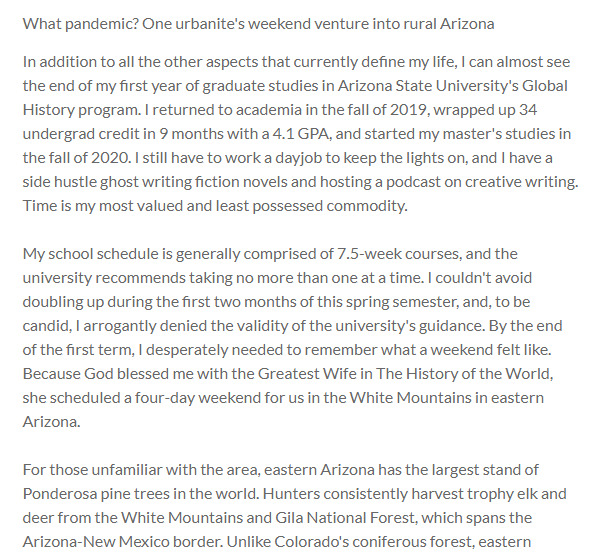 2021-03-04
2021-03-04What pandemic? One urbanite's weekend venture into rural Arizona
In addition to all the other aspects that currently define my life, I can almost see the end of my first year of graduate studies in Arizona State University's Global History program. I returned to academia in the fall of 2019, wrapped up 34 undergrad credit in 9 months with a 4.1 GPA, and started my master's studies in the fall of 2020. I still have to work a dayjob to keep the lights on, and I have a side hustle ghost writing fiction novels and hosting a podcast on creative writing. Time is my most valued and least possessed commodity. My school schedule is generally comprised of 7.5-week courses, and the university recommends taking no more than one at a time. I couldn't avoid doubling up during the first two months of this spring semester, and, to be candid, I arrogantly denied the validity of the university's guidance. By the end of the first term, I desperately needed to remember what a weekend felt like. Because God blessed me with the Greatest Wife in The History of the World, she scheduled a four-day weekend for us in the White Mountains in eastern Arizona. For those unfamiliar with the area, eastern Arizona has the largest stand of Ponderosa pine trees in the world. Hunters consistently harvest trophy elk and deer from the White Mountains and Gila National Forest, which spans the Arizona-New Mexico border. Unlike Colorado's coniferous forest, eastern Arizona seems devoid of pine beetle kill. Nothing but healthy, evergreen forest and the scent of sun-warmed pine greets you. We stayed in a vacation home on the outskirts of Pinetop, brought our groceries from home, and largely intended on hiking, cooking, drinking, and doing a lot of nothing. When we arrived in Pinetop in early March 2021, I had already fully recovered from COVID-19 and had time for both of my Moderna vaccines to have taken full effect. My wife had neither protective barrier, but we had generally become comfortable with purpose-driven shopping (as opposed to "window shopping") and takeout dining. As such, we stopped into a bakery to get breakfast on the way out to the hiking trails as a vacation treat. To our surprise, many of the patrons weren't wearing masks while walking through the restaurant or waiting in line. That made us a little uncomfortable. Then, one of the employees walked out from the kitchen with no mask on and began working on filling orders at the front, cold-food storage counters. Both of us panicked a bit and considered cancelling our orders and leaving. My wife pulled up the Arizona Department of Health Services site and quickly found that entire county had endured only a little more than 560 cases. A quick bit of division translated that into an average of two infections per day for the entire pandemic year-to-date. The statistical odds of the unmasked clerk or patrons presenting a health risk to either of us fell to just north of zero. NOT zero, but we both felt we could see it from there. The ham, egg, and cheese croissants were delicious, by the way. In trying to be good guests, we continued to wear our masks whenever we ventured into public spaces and businesses. Less than half of those around did the same, and I didn't see or hear anyone confront each other about mask wearing. Our last venture out that weekend was to a beer garden with a prominent outdoor patio and seating area. We again wore our masks inside the establishment, but we immediately felt like outcasts for having done so. When we stepped inside, it looked as though the town villain had just stepped through the saloon doors: all activity inside the business stopped, and everyone seated inside turned around to look us up-and-down for few silent moments. If anyone had been playing piano, they would have switched to a minor key. NO ONE else inside wore a mask, and the interior tables didn't appear to have been spaced to comply with prevailing social distancing guidelines. Everyone stayed kind of quiet until we ordered beers and asked to sit outside. In hindsight, I wonder if they expected we were there from some government bureaucracy to issue citations, or just out-of-towners about to have a value-based hissy fit? I have been generally opposed to broad behavior mandates that typically justify compliance on urban problems, but that weekend compelled me to really consider the divergent pandemic realities Arizonans have endured for the past year. Further analysis of county-specific data seems to suggest at least four divergent pandemic experiences within Arizona: urban centers, border counties, rural counties, and Native American reservations. I hope to better understand the personal experiences of those who lived in these diverse regions and how the pandemic affected their perspective and reality. -
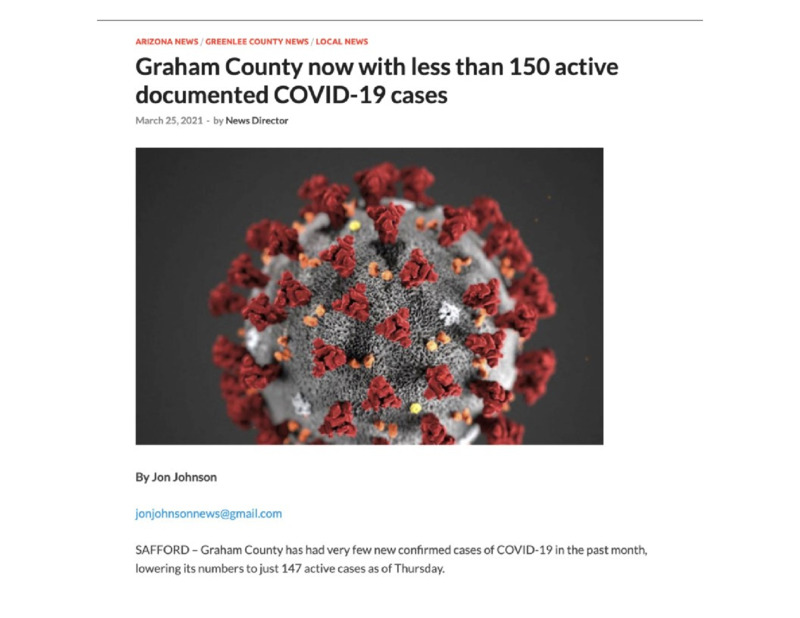 2021-03-25
2021-03-25News Article: Graham County (AZ) now with less than 150 active documented COVID-19 cases
"By Jon Johnson, jonjohnsonnews@gmail.com SAFFORD – Graham County has had very few new confirmed cases of COVID-19 in the past month, lowering its numbers to just 147 active cases as of Thursday. According to the Graham County Department of Health and Human Services, Graham County has had a total of 5,355 confirmed cases for the course of the pandemic, with 5,132 listed as being recovered, 147 active, and 76 deaths in more than a year. No new cases were recorded Thursday, and, according to the Arizona Department of Health Services COVID-19 school dashboard, Graham County had just a 1 percent positivity rate as of the week of March 14. That is good for a tie with Apache County for the second-lowest percent positivity rate out of Arizona’s 15 counties. Only Greenlee County, which registered a zero percent positivity rate from Feb. 27 – March 14, had lower. With the lower cases statewide and vaccine rollout, Governor Doug Ducey issued an Executive Order on Thursday, rolling back several COVID-19 mitigation measures involving businesses and gatherings. This comes as other states roll back their COVID-19 mitigation measures as well. The rollout of the various COVID-19 vaccines has picked up steam in the last month, with the state opening up the vaccine to anyone 16 years old or older for the Pfizer vaccine. Anyone 18 years old or older can be administered the Moderna and Johnson & Johnson vaccines. The San Carlos Apache Healthcare Corporation is holding a free, drive-through vaccine clinic on Saturday, March 27 at the San Carlos High School. No appointment is necessary. The clinic will be administering both the Pfizer and Moderna vaccines. Graham County and Greenlee County are also providing vaccination sites for those 18 and older, and provide the Moderna and Johnson & Johnson vaccines. Greenlee County: According to the Greenlee County Health Department, the county currently has just nine active cases of COVID-19. For the course of the pandemic, Greenlee County has had 568 confirmed positive cases (by far the lowest out of any of Arizona’s 15 counties), with 549 recovered cases, nine active, and 10 deaths." -
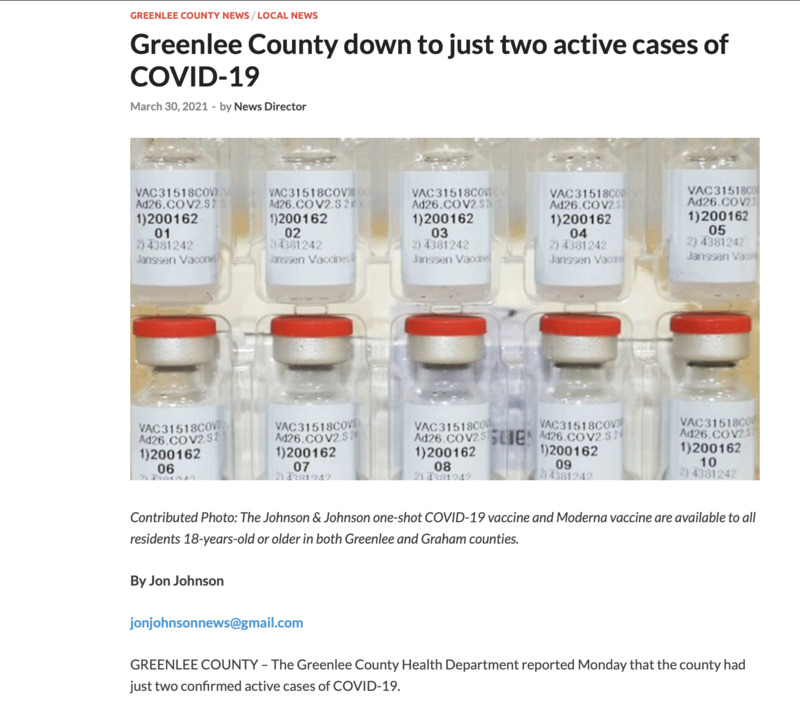 2021-03-30
2021-03-30News Article: Greenlee County (AZ) down to just 2 active COVID-19 cases
"By Jon Johnson, jonjohnsonnews@gmail.com GREENLEE COUNTY – The Greenlee County Health Department reported Monday that the county had just two confirmed active cases of COVID-19. Greenlee County has tested more than 5,000 people for the course of the pandemic and has had a total of 568 cases, with 556 recovered and 10 deaths. The county offers the Moderna COVID-19 vaccine to all residents 18-years-old or older, and on Thursday (01-April-2021) Gila Health Resources will have a vaccine clinic for the one-shot Johnson and Johnson COVID-19 vaccine. Click here to learn more or to register. According to the Arizona Department of Health Services, 37.5 percent of Greenlee County’s residents have been vaccinated for COVID-19. That is the highest percentage out of Arizona’s 15 counties. Conversely, Graham County is listed as having just 18.1 percent of its population vaccinated, which is the third-worst out of Arizona’s counties behind Maricopa County at 17.5 percent and Apache County at 10.7 percent. Graham County: The Graham County Department of Health and Human Services reported three new confirmed positive tests for COVID-19 on Tuesday. While Graham County has had 5,364 total confirmed cases of COVID-19, as of Tuesday the county had just 138 confirmed active cases. Out of all its confirmed cases, 5,150 are listed as being recovered, and 76 have died. Graham County is also offering both the Moderna and Johnson & Johnson vaccines to all residents 18-years-old or older. Click here for more information." -
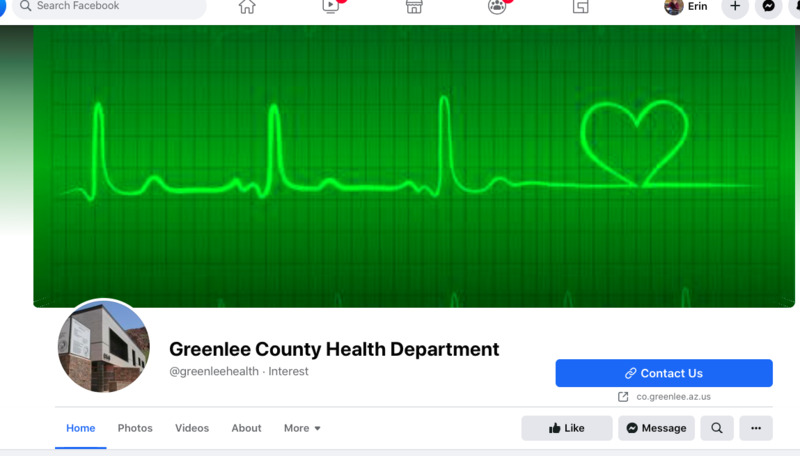 2021-04-05
2021-04-05Greenlee County (AZ) Health Department's Daily COVID-19 Updates through April 5, 2021
The Greenlee County Health Department uses its Facebook page to disseminate daily information related to the COVID-19 pandemic to its residents. The daily COVID-19 statistics are displayed as an image on the daily Facebook post, which allows examination of the department's content and messaging before and after the pandemic. Governor Doug Ducey declared a state of emergency in Arizona on March 11, 2020, which seems inconsistent with GCHD's daily posts from that period. Language on the GCHD posts consistently advised residents to stay home if they felt ill, rather than being consistent with Governor Ducey's voluntary Stay Home orders. For example, the March 30, 2021, press release to update a new active COVID-19 infection in Greenlee County reads as follows: "For Immediate Release, Tuesday, March 30, 2021, Greenlee County, Arizona. Public Information Contact: Steve Rutherford (928) 865-2601 NEW RELEASE - COVID-19 Positive Test in Greenlee County The Greenlee County Health Department is investigating one (1) new confirmed case of COVID-19. The case will put our current total at five hundred and sixty-nine (569) confirmed Greenlee County COVID-19 cases... We would like to remind the community to use masks appropriately when outside of the home, practice social distancing, wash your hands frequently, and do not go into the public when you are feeling sick, unless you are seeking medical attention." These updates demonstrate a significant dichotomy between the rural and urban experiences during this pandemic. -
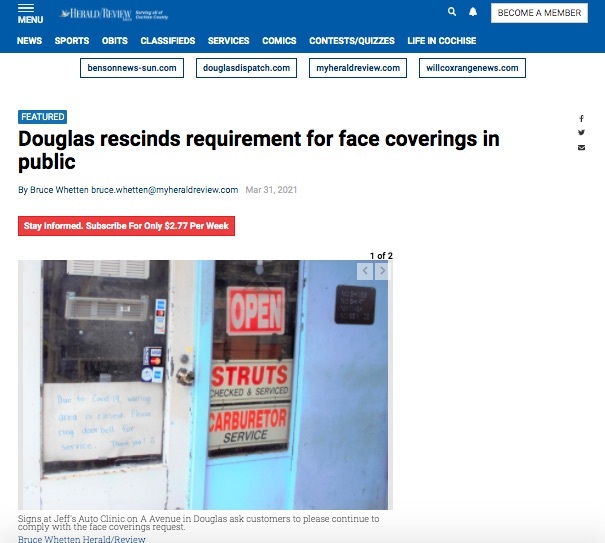 2021-03-31
2021-03-31News Article: Douglas rescinds requirement for face coverings in public
This news story relays a decision by municipal leadership in Douglas, Arizona, to rescind their mask mandates following Governor Ducey's similar order on 25-March-2021. -
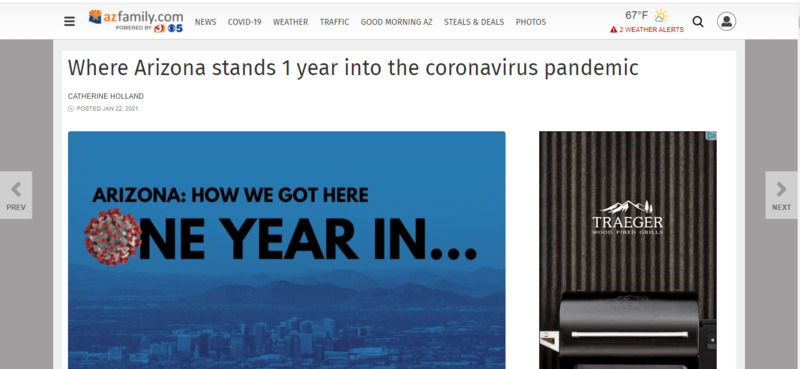 2021-01-11
2021-01-11News Article: Where Arizona stands 1 year into the coronavirus pandemic
This online news article from Catherine Holland of 3TV/CBS5 in Phoenix, Arizona, relays her assessment of key highlights in Arizona's pandemic history from the first anniversary of SARS-CoV-2's confirmed presence in Arizona on January 11, 2020. -
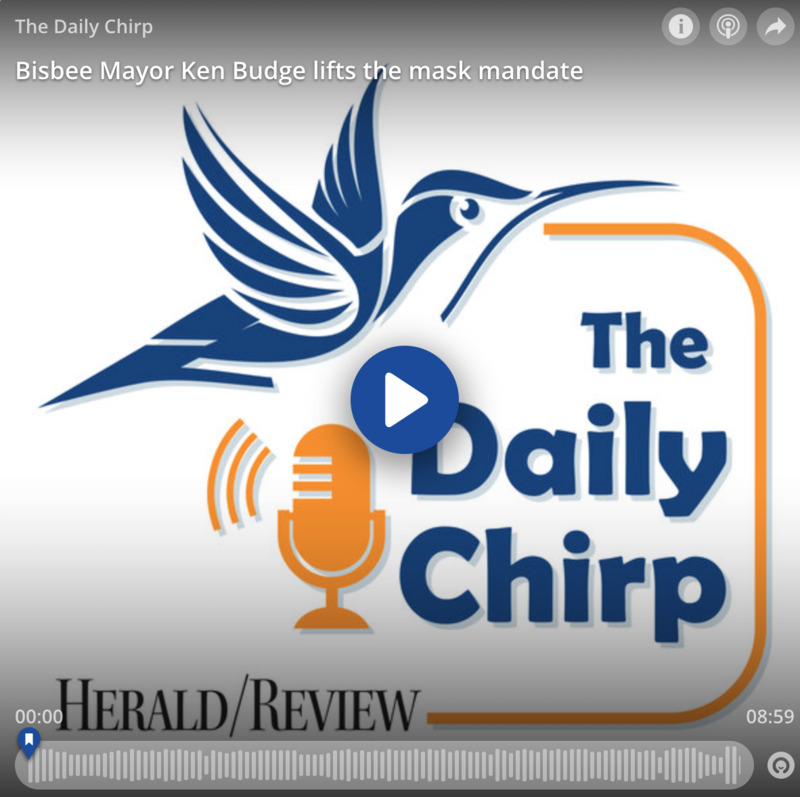 2021-03-29
2021-03-29Bisbee (AZ) Mayor Ken Budge Lifts Mask Mandate
This March 29, 2021, episode of The Daily Chirp podcast from the Douglas Herald discusses Bisbee Mayor Ken Budge's recent retraction of mask mandates in that community -
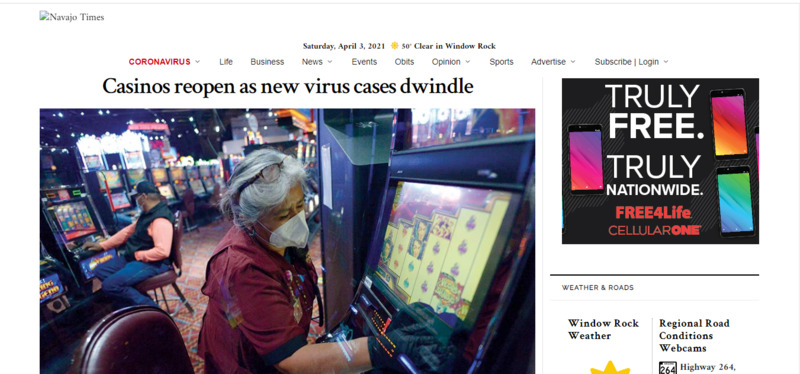 2021-03-25
2021-03-25Navajo Nation casinos reopen as new virus cases dwindle
By Donovan Quintero | Mar 25, 2021 | Business, CORONAVIRUS | CHURCH ROCK, N.M. Peterson Zah has a concern. On Tuesday, while hundreds of Fire Rock Casino patrons tried to win some money, the former Navajo Nation president wanted to hear what the COVID-19 public service announcement sounded like in Navajo. “I didn’t hear any of the PSA while inside because it’s so noisy,” he said. After taking a step outside the casino, the former Navajo Nation president said he was able to hear it. But that raised a concern for him. “And it’s pretty good,” Zah said, explaining the PSA in Navajo was clear and concise. “But you can only hear that clear outside and inside you can’t really understand it.” Zah said he was concerned no one would hear the COVID-19 safety guidelines everyone needed to follow. His other concern was that since many Navajo people have gotten both doses of the vaccines, many of them might become emboldened. “The reason why I was concerned is people have this attitude that because of the shots … they say, ‘Hey, I’m immune, I don’t have to worry about the virus.’ So when I go places I’m gonna take mine (mask) off,”’ Zah said Tuesday. According to the president’s office, more than 76,000 people have been fully vaccinated as of March 23 and more than 191,000 total doses have been administered. Zah didn’t think people should take any chances by easing up on protecting themselves from the contagious respiratory virus because some people were not wearing masks. After being closed for more than a year, Fire Rock Casino and Northern Edge Casino were on the fifth day of a two-week “soft reopening.” Just the gambling portion of the casinos were open at 25% capacity, and only Navajo Nation residents were allowed into the casinos, according to Navajo Gaming interim CEO Brian D. Parrish. Parrish clarified Navajo Nation residents meant everyone, including non-Natives, living on the reservation would have access to the casinos during the reopening phase. “We’re doing it with a two-phase reopening plan that started with Fire Rock and Northern Edge first,” he said. “We’re going to reevaluate with the Navajo Nation. They’re going to do audits and monitor our implementation of our workplace safety plan.” Of the 1,180 casino employees, 650 have returned to work since last Friday, said Parrish. Employees like Fire Rock Casino housekeeper Mildred Russell, who said she’s been out of work for over a year, were happy to be working again. “It’s been a struggle,” Russell said while cleaning a slot machine last Friday. “Hopefully this pandemic will be gone and everybody can go back to their normal lives.” Other employees, like casino security officer Vernon Keeswood from Hogback, New Mexico, shared Russell’s gratitude for getting the call to go back to work. “It’s good,” he said on Tuesday during a telephone interview that was arranged by Michele J. Crank, executive director of communications and public relations for Navajo Nation Gaming Enterprise. Instead of the usual hugs and shaking hands, Keeswood said, now it was “fist bumps” and “elbow bumps.” As for the reopening, he said many Northern Edge Casino customers “are pleased and happy” the Navajo casinos have begun reopening. He added a few customers were not sure if the casinos should reopen. “I hope everyone washes their hands and practices social distancing so we open to 100 percent capacity,” Keeswood said. “I hope it opens more.” After all, the threat of another COVID-19 outbreak looms on everyone’s mind, including that of Robert Peterson from Thoreau. “People are still afraid to come here but a lot of them want to enjoy being out instead of being stuck at home,” said Peterson, who said he lives alone, last Friday. Peterson said being alone and dealing with the pandemic has been hard for him. Despite his fears, he decided to head to Fire Rock to get his mind off COVID-19. Mary E. Silversmith, 79, from Lupton, Arizona, ensured no one came to visit her with a “no visitors allowed” sign posted on her hogan. She was happy to support the casino employees who returned to work. “The casinos were opened for the casino employees,” she said on Tuesday at Fire Rock. “Many of have children and they have bills to pay. “Because of that, I am OK with the reopening,” she said. “Some people have been criticizing the reopening. Not me, I don’t think that way or talk that way.” Before the pandemic, Silversmith said she frequently ate at Fire Rock, as well as at Twin Arrows Casino and Resort, when she had extra money to spend. Silversmith was wearing a surgical mask. To gain entry into both casinos during the soft reopening, a state ID, like a driver’s license, is required and a working number at which customers can be contacted. Temperature checks were also part of the requirements for anyone wanting to enter. After their temperature was checked, security asked customers to momentarily remove their masks and look at the front entrance security camera. The purpose of collecting all of the information is for contact tracing, said Parrish. “We have an excellent plan that’s in place,” he said. “We’ve had it reviewed and modified and enhanced by public health experts, not only on Navajo, but outside the Navajo Nation.” He added that Navajo Gaming invested close to $2 million in “equipment, supplies, signage, training,” to keep everybody safe. U.S. Indian Health Service officials toured both of the casinos’ kitchens on March 12, Parrish added, to review their safety procedures. “And in terms of reopening of the other properties, especially at a higher capacity percentage, that’s going to be based not only on how well the enterprise does, but what’s happening with the public health metrics, the rate of vaccinations on Navajo and other key indicators like that,” the interim CEO said. The Navajo Gaming enterprise’s careful planning even got praise from Jordan Schermerhorn, a senior research associate at Georgetown Center for Global Health Science and Security. Schermerhorn stated in an email to NNGE their plan showed the tribe was leading “the entire country in a smart, careful return to normalcy.” “Combined with the Navajo Nation’s outstanding vaccine rollout, this soft reopening shows what is possible with a data-driven pandemic response in a community dedicated to public safety,” Schermerhorn‘s email said. Even the ventilation, air conditioning and heating systems, which completely re-circulate the air inside the casinos 15 times a day, were reviewed, said Parrish. “We’re ready to go to fifty percent, we’re ready to offer food and we’re ready to bring the rest of our team back,” Parrish said. Zah watched casino patrons trying to win money as sounds from the Tuesday afternoon hustle and bustle all but drowned out the COVID-19 PSA. “So basically, the attitude shouldn’t be such now that because they got their shot they don’t have to worry about it,” he said. “It’s still around. Even though ninety percent of the people may be wearing their mask, or all of them, if one of them comes in that has it, then we’re in trouble.” Zah explained a new COVID-19 variant is much smaller than the original strain, which to him was why everyone needed to double mask. “If you can see light through your mask that means it’s gonna go through,” Zah said. “We gotta start wearing two masks.” He said he intends to go on KTNN and remind everyone not to run off to Phoenix or Albuquerque just because they’ve been vaccinated. “At the same time, they still have to follow those protocols,” he said. “I want to say, ‘You gotta start wearing double masks.’” As of Tuesday night, the Navajo Nation Department of Health reported a cumulative 30,010 cases of the virus and 1,233 deaths. -
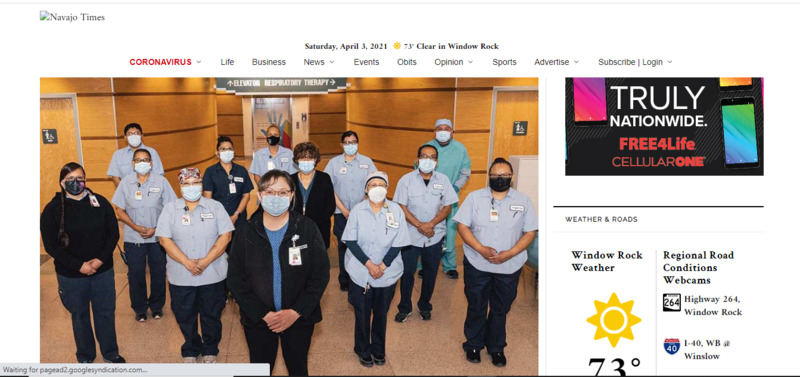 2021-03-26
2021-03-26‘They became warriors’: Reflections from the front lines as Tséhootsooí Medical Center workers share experiences
By Rima Krisst | Mar 26, 2021 | CORONAVIRUS, People | Tséhootsooí Medical Center workers share experiences Wilberta “Billy” Jackson, public health nurse III This pandemic has been the longest roller coaster of stress, grief, and loss. I’ve kept my routine simple – sleep, eat, and exercise. And, more sleep. This has been and will probably be the most challenging time of our lives. I could focus on all the bad, but so much good has come from this, from community members stepping up, leaders rolling their sleeves up and getting dirty, how we came together to care for our elders, and so much more. Professionally, we’ve adjusted and readjusted a million times over and completely changed how we deliver health care. We’ve had information, guidance, and policies being added or changing every day and we still were able to deliver health care in a safe, efficient manner. At the beginning of the pandemic, our leaders were warning everyone about the health care system being overwhelmed. Most people thought about it in terms of hospitals running out of beds, but they didn’t think of it in terms of how an underfunded and shorthanded public health force would respond to a pandemic in a rural area with limited resources, and where a population’s most basic physiological and safety needs are not being met. When you don’t have access to clean water, food, shelter and security, you’re not able to prioritize prevention measures until your basic human needs are addressed. The resiliency of the Diné people is unrivaled. The days I’m struggling or feel like giving up, I hear my grandmother’s words, and that’s what keeps me going. And my mother’s surprise delivery of Navajo soul food meals. I’m a public health nurse, so it won’t come as a surprise that I’m excited about the COVID vaccines. We’ve already seen a substantial decline in cases, hospitalizations, and deaths, so we know it’s working. My hope is that our response to the next pandemic or health care crisis won’t be complicated by politics, lack of national strategy, lack of preparation, and misinformation. Stacey Burnside, Primary Care registered nurse What I have learned from this pandemic is to cherish every day and every person that you love. COVID-19 has impacted my family and me profoundly. I lost an uncle and an aunt to COVID-19, and to this day, it is surreal that they are gone. As a primary care nurse, it is difficult to hear about losing a patient to COVID-19, and at the peak, it was almost a daily occurrence… The challenges that I faced during this pandemic were adapting to the changes in work roles and being separated from the people I love. The clinic that I worked in was closed when the pandemic hit the first peak, and I, along with my coworkers, was informed that we had to work in the Emergency Room. The moment that I saw a patient who needed me to be their nurse, despite having COVID-19, humbled me. That moment in the ER humanized COVID-19 for me and made me realize that I was put there for a reason. No matter what the situation is, nurses adapt, and the teamwork and strength we draw upon each other are phenomenal. A huge hit to me personally and professionally was losing a friend to suicide … dealing with grief, loss, and stress has been a daily thing. What has helped me is drawing strength from my God, husband and son, and family. There are many negatives to the pandemic, but one positive that many have seen is the love and strength we have found among our families. I am thrilled that we are at a point of a high vaccination rate in the Navajo Nation. I remember when I administered my first COVID-19 vaccine to a patient, it brought tears to my eyes, and I cried after work. Leah Chattin, respiratory therapist I’ve been a respiratory therapist since 2003. What I experienced throughout the first surge of COVID-19 here on Dinetah is not what you prepare for. I see the impact on my life as deep internal scars that I buried and to resurface those experiences is a nightmare. Imagine the inability to fully take a deep breath, something so simple we take for granted. Supporting my patients with breathing treatments, providing chest physical therapy, changing breathing devices constantly because the demand for oxygen escalates all in a 12-hour or more shift. All these specialized techniques to avoid the last option of intubation, allowing an artificial airway introduced to your trachea with an opening at the tip to provide mechanical breaths from a mechanical ventilator. Fear expressed from my patients was a frequent emotion. You are alone, isolated from your family, your loved ones, no familiar face to embrace, to celebrate your improvement or the worst, a decline despite the battle you have endured. I’d remind my patients not to give up… Instinct took over because I’m a mother too, a nurturer. I can remember softly stroking their hair, holding their hands, shedding tears, praying, putting myself in that empty place at bedside where your family should be gathered, processing the grief. Accepting loss was tremendously difficult. I lost myself because I did not decompress my emotions. My spirit slivered away slowly each time my patients faced rejection of our efforts to sustain life. How I endured and sustained my sanity was prayer requests. Prayer was undoubtedly my saving grace. This virus is fluidic, the path it took was unpredictable. I strongly believe we need to continue wearing a mask, following the CDC guidelines and begin or sustain our health and wellness. Putting into words my experience was not an easy effort, however it’s a pathway for healing. Every COVID patient I battled for will forever have a place in my heart. Sandra Fouser, nurse executive of the Primary Care and Specialty Clinics Seeing the virus cross the ocean and hit the heart of the Navajo Reservation forever changed our lives. As a health professional, I knew venturing into the unknown with limited protection meant some would survive and some wouldn’t. What I have learned working on the front lines – compassion, cohesiveness, companionship, strength, sadness and mental stress. We have been battered, beaten, praised, comforted and have also received recognition from all walks of life. I am proud to be a nurse. I believe the strength to endure comes from resiliency and the people we work with and the support of our families at home. As nurses, we cannot stand still. I feel it is in our blood to help and move forward. I have lost friends, coworkers, relatives and patients. The grief I feel is palpable, almost more than I can handle. Seeing my family, staff and patients suffer through illness and grief has been very challenging and heartbreaking. As a team, I believe when something happens to one of us, we all feel the effects, we grow closer and find comfort in each other. I see the vaccine as a progression toward eradicating the detrimental effects of this virus and giving us hope that there is a better tomorrow and that Hózhó will be restored. Dr. Karen Williams, hospitalist physician I am a Native physician (Mountain Maidu/Apache) and Indian Health Service Professional Scholar. When the pandemic started our hospitals were suddenly overwhelmed with large numbers of very ill patients needing oxygen. Some patients who worsened were placed on a “life support” or ventilators since they could no longer breathe on their own. Despite our best medical management efforts, including use of high-flow oxygen, there were patients who did not survive. I witnessed more death in a year than I have ever experienced in my career. This was traumatic for me because every day I came to work I felt like I was coming into a war zone. We saw people struggling to breathe and fighting for their life. We heard family members saying their goodbyes to their loved ones and crying over the phone. We held hands of those who took their last breath and witnessed co-workers not able to control their tears. If it were not for our team efforts, almost a military-style mentality, we could not have managed. As a hospitalist physician, the biggest challenge was ensuring that I had the most up-to-date medical knowledge to save a patient’s life. During the beginning of the pandemic many doctors throughout the country did not feel prepared. This was quickly overcome by learning medical strategies used by doctors throughout the world. The treatments used included steroids, anticoagulant medications, and high-flow oxygen. We had the support of our hospital’s incident command leadership and adapted to the changes. This included being able to offer our patients who needed oxygen a federal Drug Administration-approved “emergency use” medication called Remdesivir, and more recently Bamlavinimab for non-hospitalized patients My experiences on the front lines were psychologically and physically overwhelming … I sought support from elders and used my Native spirituality for strength. I also sought protection support from traditional Indian practitioners who set up a tipi and hogan outside the hospital for employees. I sometimes thought twice about the danger I was in. However, I acknowledged that I would never walk away. This is a result of my obligation to the Native community and the hundreds of patients I had gotten to know for so long. I “warriored up” in my mind and sought to do the best I could. I do not foresee an end to mask wearing, and now recognize how careful we all must be to protect each other. I saw too many elders get severely ill and even pass away from COVID as a result of young family members not being careful and bringing it home. I have encouraged community members and my own family to get the vaccine as soon as possible. I received two doses of the Pfizer vaccine and said a prayer in my Native way each time for protection. Natasha Topaha, certified medical assistant, Mobile Unit Overall, this year has been extremely challenging, but also has reinforced my personal strength and resiliency. I have had ongoing concerns throughout the epidemic regarding my kids’ isolation and their mental health. It has been difficult, but doable, to manage both working in health care and supporting my family both emotionally and physically. I had constant worry about bringing the virus home and infecting my family given that I was working in high risk areas and providing COVID testing, vaccines and social and mental health support to patients. I found that doing outdoor activities with my family, such as bike riding and hiking, helped me ease my stress and helped teach my children some healthy coping skills. And we could spend time together! I feel very happy and grateful in both receiving the vaccine and being able to provide it to patients and the community. I feel safer at work and at home now. Johnny Willeto Jr., facility manager/logistics chief The strength to endure comes from within yourself. For me this began in my childhood as the son of Delphine Damon Willeto and Johnny Willeto Sr., who nurtured me to become a great human being. They taught me to be a courageous, productive worker and know my limitations. As a facilities manager, my main focus and responsibilities are the protection in the physical environment of all who walk through the doors of Fort Defiance Indian Health Board’s facilities. All we knew is that COVID-19 was airborne and surface communicated. I treated it as you would tuberculosis and ensured that my staff had adequate PPE to help protect them when they are tasked with working in the patient care areas. This responsibility was a big challenge when trying to procure medical equipment such as masks, gloves, safety glasses, gowns, scrubs, and so forth. Having an MBA has allowed me to flourish in this high stress environment and to adjust with adaptations to finding supplies and creating new relationships with trustworthy suppliers. Being in close proximity to patients who are struggling with getting well can be heart wrenching. Being able to fulfill my duties in the support role to the best of my ability for my community and teammates has allowed me to sleep well at night knowing that I gave it my all. I have lost a brother-in-law who contracted the virus in the Scottsdale area of Arizona. These were very difficult times because as Navajos we are accustomed to comforting each other by a hug or handshake. With COVID, gatherings are not safe, so having family meetings for planning the funeral is off and also the funeral usually consists of 10 minutes before the burial with only a few close family in attendance. One of the biggest assets I have gained is the spiritual belief in God and keeping the communication open by saying my prayers often – to be thankful for the blessings that have come my way or when asking for strength to endure the hardships. In my free time I isolate on the Willeto Sheep Ranch in Goatsprings Valley, Arizona, where I tend 120 sheep and goats. Being able to separate the everyday stress and recharge is paramount to going forward with courage and mental sharpness to make the right choices for the organization, patients and employees. The vaccines are an effective tool to help reduce the mortality of the virus on us and give us protection to this invisible enemy. Corinne Legah, Environmental Service supervisor Personally, I was scared when I first heard of the spread of the virus overseas. It was shocking how fast the virus traveled. In the beginning our team was needed to help keep the hospital sanitized and safe for patients. We reinforced training on the cleaning process for the airborne/droplet virus. I constantly stressed wearing PPE and hand washing. I am so proud of the team for stepping up by protecting our patients. They became warriors to fight the virus. I believe without my husband’s support and God I would not have been able to cope. I have lost friends and family from this virus. It saddens me that many of our people are now in the spirit world. Being a Native and growing up with Navajo beliefs, I had to be strong. My ancestors went through so much and our people are resilient. Prayer is our strength. I cried when I watched the news when the vaccine was given to the first person in the U.S. If everyone gets their vaccine we will be able to interact with family again. I am looking forward to that day! -
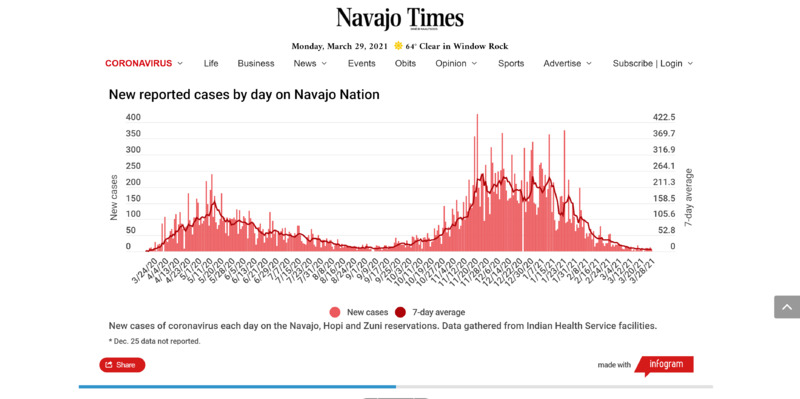 2021-03-29
2021-03-29In numbers: Tracking COVID-19 Across the Navajo Nation
In numbers: Tracking COVID-19 Across the Navajo Nation By Navajo Times | Mar 29, 2021 | CORONAVIRUS | On Sunday, Navajo Nation health officials reported 7 new COVID-19 cases. A total of 30,059 people have been sickened by the coronavirus. The rate of decrease in new cases is slowing. Nevertheless, the seven day average is 7 new cases per day, a decrease of 30 percent from the average two weeks earlier. On a per-capita basis, about 3 cases for every 100,000 people on the Navajo Nation are active. This means the Navajo Nation has the lowest per-capita cases anywhere in the 50 U.S. states. No new deaths were announced, leaving the total at 1,246 casualties of the virus. At least 16,342 people on the Navajo Nation have recovered. More than 8 of 10 people on the Navajo Nation have received at least one dose of the vaccine, or 86.3 percent of the population as of March 26, according to the Navajo Area Indian Health Service. A spokesperson for the Navajo Area IHS says 244,209 people get health care from it. Of those, 196,902 have received at least their first dose of a COVID-19 vaccine. That number includes 88,891 people, or 36.4 percent, who are fully vaccinated, according to the spokesperson. Caution is still warranted: Highly contagious variants of the virus continue to spread. The more lethal U.K. variant is doubling every 10 days throughout the United States. It now represents more than half of new U.S. cases. Many jurisdictions near the Navajo Nation are relaxing COVID restrictions. Some health experts warn that easing up right now is too soon. It could lead to an increase in new cases. Health experts recommend continued vigilance in wearing masks, social distancing, avoiding socializing with people outside your immediate household, and hand-washing. Double-masking also is recommended. For those who are fully vaccinated, the CDC still recommends wearing a mask and hand-washing; although social restrictions are more relaxed. Follow this link for complete CDC guidance for those who are vaccinated: https://www.cdc.gov/coronavirus/2019-ncov/vaccines/fully-vaccinated.html Although the Navajo Nation has relaxed some restrictions, a daily curfew remains in efffect from 10 p.m. to 5 a.m. Businesses may remain open until 9 p.m. timeline Positive Test Rate The estimated percentage of people who tested positive was 1.2 percent on Sunday. The 7-day average positive test rate was estimated at 1.9 percent. The World Health Organization recommends a 7-day average positive test rate of less than 10 percent for two weeks in a row. Localities that have a test rate of 3 percent or less are most successful in containing COVID-19, according to the WHO. At Hopi, one new cases was reported overnight, bringing the total to 1,376. The Hopi radio station reported on its Facebook page that at least 120 people have died since the pandemic began last year, but the Hopi Tribe has not consistently reported fatalities from the virus. The following charts and maps show the extent and location of the coronavirus on and near the Navajo Nation. Hover over, tap or click the map markers and graph for expanded information. (Last updated March 29, 2021 at 10:44 a.m. MDT.) Growth of COVID-19 on Navajo Nation and Hopi Reservation Cases April 2020 June 2020 August 2020 October 2020 December 2020 February 2021 0 10,000 20,000 30,000 40,000 Number Date Cases Mar 16, 2020 2 Mar 18, 2020 3 Mar 20, 2020 14 Mar 21, 2020 26 Mar 23, 2020 29 Mar 24, 2020 39 Mar 25, 2020 69 Mar 26, 2020 71 Mar 27, 2020 92 Mar 28, 2020 115 Mar 29, 2020 128 Apr 1, 2020 214 Apr 2, 2020 214 Apr 4, 2020 321 Apr 5, 2020 354 Apr 6, 2020 384 Apr 7, 2020 426 Apr 8, 2020 488 Apr 9, 2020 558 Apr 10, 2020 597 Apr 11, 2020 698 Apr 13, 2020 813 Apr 14, 2020 838 Apr 15, 2020 921 Apr 16, 2020 1,042 Apr 17, 2020 1,127 Apr 18, 2020 1,197 Apr 20, 2020 1,206 Apr 22, 2020 1,282 Apr 23, 2020 1,360 Apr 24, 2020 1,540 Apr 25, 2020 1,637 Apr 26, 2020 1,716 Apr 27, 2020 1,769 Apr 28, 2020 1,873 Apr 29, 2020 1,977 Apr 30, 2020 2,141 May 1, 2020 2,292 May 2, 2020 2,373 May 4, 2020 2,474 May 5, 2020 2,559 May 6, 2020 2,654 May 7, 2020 2,757 May 9, 2020 2,976 May 10, 2020 3,122 May 11, 2020 3,202 May 13, 2020 3,392 May 14, 2020 3,632 May 15, 2020 3,740 May 16, 2020 3,912 May 17, 2020 4,002 May 18, 2020 4,071 May 19, 2020 4,153 May 20, 2020 4,253 May 21, 2020 4,434 May 22, 2020 4,529 May 23, 2020 4,633 May 24, 2020 4,689 May 25, 2020 4,794 May 26, 2020 4,842 May 27, 2020 4,944 May 28, 2020 5,044 May 29, 2020 5,145 May 30, 2020 5,250 May 31, 2020 5,348 Jun 1, 2020 5,479 Jun 2, 2020 5,533 Jun 3, 2020 5,661 Jun 4, 2020 5,730 Jun 5, 2020 5,808 Jun 6, 2020 5,918 Jun 7, 2020 6,020 Jun 8, 2020 6,110 Jun 9, 2020 6,150 Jun 10, 2020 6,275 Jun 11, 2020 6,378 Jun 12, 2020 6,470 Jun 13, 2020 6,554 Jun 14, 2020 6,611 Jun 15, 2020 6,633 Jun 16, 2020 6,672 Jun 17, 2020 6,747 Jun 18, 2020 6,832 Jun 19, 2020 6,894 Jun 20, 2020 6,963 Jun 21, 2020 6,990 Jun 22, 2020 7,045 Jun 23, 2020 7,088 Jun 24, 2020 7,157 Jun 25, 2020 7,278 Jun 26, 2020 7,320 Jun 27, 2020 7,414 Jun 28, 2020 7,469 Jun 29, 2020 7,532 Jun 30, 2020 7,549 Jul 1, 2020 7,613 Jul 2, 2020 7,669 Jul 3, 2020 7,733 Jul 4, 2020 7,804 Jul 5, 2020 7,840 Jul 6, 2020 7,914 Jul 7, 2020 7,941 Jul 8, 2020 7,981 Jul 9, 2020 8,042 Jul 10, 2020 8,098 Jul 11, 2020 8,124 Jul 12, 2020 8,187 Jul 13, 2020 8,243 Jul 14, 2020 8,290 Jul 15, 2020 8,370 Jul 16, 2020 8,486 Jul 17, 2020 8,536 Jul 18, 2020 8,568 Jul 19, 2020 8,593 Jul 20, 2020 8,617 Jul 21, 2020 8,639 Jul 22, 2020 8,684 Jul 23, 2020 8,734 Jul 24, 2020 8,768 Jul 25, 2020 8,837 Jul 26, 2020 8,891 Jul 27, 2020 8,912 Jul 28, 2020 8,927 Jul 29, 2020 8,968 Jul 30, 2020 9,019 Jul 31, 2020 9,055 Aug 1, 2020 9,068 Aug 2, 2020 9,103 Aug 3, 2020 9,139 Aug 4, 2020 9,156 Aug 5, 2020 9,195 Aug 6, 2020 9,223 Aug 7, 2020 9,257 Aug 8, 2020 9,293 Aug 9, 2020 9,308 Aug 10, 2020 9,315 Aug 11, 2020 9,334 Aug 12, 2020 9,356 Aug 13, 2020 9,394 Aug 14, 2020 9,412 Aug 15, 2020 9,423 Aug 16, 2020 9,447 Aug 17, 2020 9,469 Aug 18, 2020 9,486 Aug 19, 2020 9,500 Aug 20, 2020 9,519 Aug 21, 2020 9,531 Aug 22, 2020 9,545 Aug 23, 2020 9,547 Aug 24, 2020 9,557 Aug 25, 2020 9,573 Aug 26, 2020 9,597 Aug 27, 2020 9,601 Aug 28, 2020 9,780 Aug 29, 2020 9,789 Aug 30, 2020 9,800 Aug 31, 2020 9,820 Sep 1, 2020 9,830 Sep 2, 2020 9,847 Sep 3, 2020 9,871 Sep 4, 2020 9,883 Sep 5, 2020 9,891 Sep 6, 2020 9,900 Sep 7, 2020 9,901 Sep 8, 2020 9,903 Sep 9, 2020 9,915 Sep 10, 2020 9,933 Sep 11, 2020 9,952 Sep 12, 2020 9,969 Sep 13, 2020 9,977 Sep 14, 2020 9,982 Sep 15, 2020 9,992 Sep 16, 2020 10,059 Sep 17, 2020 10,083 Sep 18, 2020 10,090 Sep 19, 2020 10,107 Sep 20, 2020 10,119 Sep 21, 2020 10,131 Sep 22, 2020 10,141 Sep 23, 2020 10,167 Sep 24, 2020 10,212 Sep 25, 2020 10,237 Sep 26, 2020 10,269 Sep 27, 2020 10,290 Sep 28, 2020 10,312 Sep 29, 2020 10,333 Sep 30, 2020 10,355 Oct 1, 2020 10,369 Oct 2, 2020 10,404 Oct 3, 2020 10,421 Oct 4, 2020 10,441 Oct 5, 2020 10,454 Oct 6, 2020 10,501 Oct 7, 2020 10,546 Oct 8, 2020 10,582 Oct 9, 2020 10,632 Oct 10, 2020 10,675 Oct 11, 2020 10,696 Oct 12, 2020 10,728 Oct 13, 2020 10,737 Oct 14, 2020 10,780 Oct 15, 2020 10,819 Oct 16, 2020 10,857 Oct 17, 2020 10,913 Oct 18, 2020 10,955 Oct 19, 2020 10,969 Oct 20, 2020 10,999 Oct 21, 2020 11,030 Oct 22, 2020 11,101 Oct 23, 2020 11,151 Oct 24, 2020 11,217 Oct 25, 2020 11,298 Oct 26, 2020 11,362 Oct 27, 2020 11,386 Oct 28, 2020 11,462 Oct 29, 2020 11,603 Oct 30, 2020 11,694 Oct 31, 2020 11,753 Nov 1, 2020 11,828 Nov 2, 2020 11,875 Nov 3, 2020 11,947 Nov 4, 2020 12,080 Nov 5, 2020 12,195 Nov 6, 2020 12,288 Nov 7, 2020 12,447 Nov 8, 2020 12,571 Nov 9, 2020 12,641 Nov 10, 2020 12,720 Nov 11, 2020 12,818 Nov 12, 2020 12,971 Nov 13, 2020 13,069 Nov 14, 2020 13,249 Nov 15, 2020 13,373 Nov 16, 2020 13,596 Nov 17, 2020 13,744 Nov 18, 2020 13,880 Nov 19, 2020 14,085 Nov 20, 2020 14,441 Nov 21, 2020 14,612 Nov 22, 2020 15,039 Nov 23, 2020 15,236 Nov 24, 2020 15,374 Nov 25, 2020 15,616 Nov 26, 2020 15,862 Nov 27, 2020 15,954 Nov 28, 2020 16,223 Nov 29, 2020 16,427 Nov 30, 2020 16,595 Dec 1, 2020 16,711 Dec 2, 2020 17,035 Dec 3, 2020 17,310 Dec 4, 2020 17,495 Dec 5, 2020 17,738 Dec 6, 2020 17,915 Dec 7, 2020 18,163 Dec 8, 2020 18,324 Dec 9, 2020 18,575 Dec 10, 2020 18,943 Dec 11, 2020 19,199 Dec 12, 2020 19,420 Dec 13, 2020 19,608 Dec 14, 2020 19,766 Dec 15, 2020 19,929 Dec 16, 2020 20,095 Dec 17, 2020 20,395 Dec 18, 2020 20,569 Dec 19, 2020 20,810 Dec 20, 2020 21,019 Dec 21, 2020 21,177 Dec 22, 2020 21,327 Dec 23, 2020 21,513 Dec 24, 2020 21,833 Dec 25, 2020 21,833 Dec 26, 2020 22,155 Dec 27, 2020 22,155 Dec 28, 2020 22,371 Dec 29, 2020 22,526 Dec 30, 2020 22,776 Dec 31, 2020 23,090 Jan 1, 2021 23,429 Jan 2, 2021 23,581 Jan 3, 2021 23,728 Jan 4, 2021 23,841 Jan 5, 2021 23,978 Jan 6, 2021 24,247 Jan 7, 2021 24,521 Jan 8, 2021 24,776 Jan 9, 2021 24,979 Jan 10, 2021 25,216 Jan 11, 2021 25,383 Jan 12, 2021 25,383 Jan 13, 2021 25,746 Jan 14, 2021 25,952 Jan 15, 2021 26,073 Jan 16, 2021 26,287 Jan 17, 2021 26,383 Jan 18, 2021 26,448 Jan 19, 2021 26,517 Jan 20, 2021 26,612 Jan 21, 2021 26,782 Jan 22, 2021 26,955 Jan 23, 2021 27,109 Jan 24, 2021 27,484 Jan 25, 2021 27,573 Jan 26, 2021 27,665 Jan 27, 2021 27,887 Jan 28, 2021 27,987 Jan 29, 2021 28,075 Jan 30, 2021 28,217 Jan 31, 2021 28,325 Feb 1, 2021 28,388 Feb 2, 2021 28,471 Feb 3, 2021 28,544 Feb 4, 2021 28,668 Feb 5, 2021 28,796 Feb 6, 2021 28,872 Feb 7, 2021 28,897 Feb 8, 2021 28,937 Feb 9, 2021 28,994 Feb 10, 2021 29,041 Feb 11, 2021 29,098 Feb 12, 2021 29,167 Feb 13, 2021 29,205 Feb 14, 2021 29,269 Feb 15, 2021 29,283 Feb 16, 2021 29,308 Feb 17, 2021 29,336 Feb 18, 2021 29,386 Feb 19, 2021 29,464 Feb 20, 2021 29,509 Feb 21, 2021 29,535 Feb 22, 2021 29,551 Feb 23, 2021 29,576 Feb 24, 2021 29,602 Feb 25, 2021 29,655 Feb 26, 2021 29,710 Feb 27, 2021 29,719 Feb 28, 2021 29,740 Mar 1, 2021 29,754 Mar 2, 2021 29,774 Mar 3, 2021 29,794 Mar 4, 2021 29,816 Mar 5, 2021 29,838 Mar 6, 2021 29,857 Mar 7, 2021 29,866 Mar 8, 2021 29,873 Mar 9, 2021 29,887 Mar 10, 2021 29,900 Mar 11, 2021 29,911 Mar 12, 2021 29,930 Mar 13, 2021 29,945 Mar 14, 2021 29,948 Mar 15, 2021 29,954 Mar 16, 2021 29,957 Mar 17, 2021 29,968 Mar 18, 2021 29,987 Mar 19, 2021 29,992 Mar 20, 2021 29,998 Mar 21, 2021 30,007 Mar 22, 2021 30,007 Mar 23, 2021 30,010 Print COVID-19 Cases on the Navajo Reservation Presumptive Positive Tested Positive Died Recovered 0 5000 10000 15000 20000 25000 30000 Navajo Nation Chinle AZ IHS Tuba City Regional Health Care Shiprock NM IHS Gallup NM IHS Fort Defiance NM IHS Crownpoint NM IHS Kayenta AZ IHS Winslow IHS Zuni reservation Hopi reservation Utah Navajo Health System Number of cases Community Presumptive Positive Tested Positive Died Recovered Navajo Nation 0 12483 1205 16,212 Chinle AZ IHS 5496 0 0 Tuba City Regional Health Care 6 5324 0 0 Shiprock NM IHS 0 5018 0 0 Gallup NM IHS 0 4729 0 0 Fort Defiance NM IHS 0 3562 0 0 Crownpoint NM IHS 0 2861 0 0 Kayenta AZ IHS 0 2642 0 0 Winslow IHS 0 1948 0 0 Zuni reservation 0 1454 0 0 Hopi reservation 0 1372 120 0 Utah Navajo Health System 0 1064 0 0 NOTE: Navajo Nation officials have been reconciling discrepancies for July and August data. At the end of August, in a press release, the president’s office added 165 cases that occurred between April 6 and Aug. 12. Then, on Sept. 8, they added 2 more cases for July. Health officials also added 16 more deaths to the overall tally at the beginning of September. According to a news release, the deaths occurred between May and August. Officials blamed several states for delayed results. On Sept. 16, officials added 49 previously unreported cases in New Mexico. -
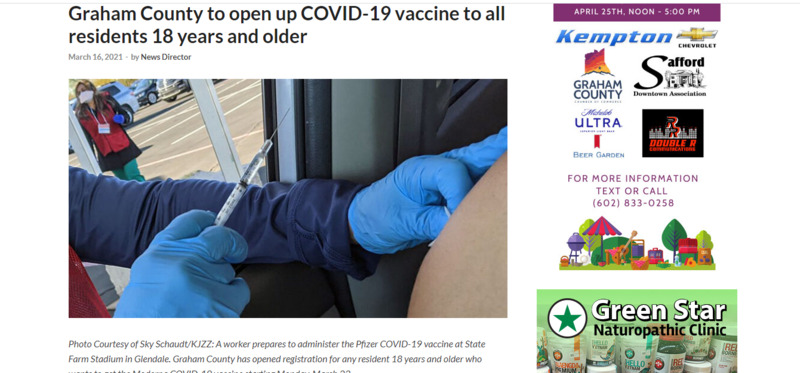 2021-03-16
2021-03-16Graham County (AZ) to open up COVID-19 vaccine to all residents 18 years and older
Staff Reports SAFFORD – The Graham County Department of Health and Human Services has announced that starting Monday, March 22, any resident of Graham County who is 18 years old or older will be eligible to receive a vaccine for COVID-19. Those who would like a COVID-19 vaccination should contact their primary care physician or schedule an appointment with the health department by clicking here. Those who schedule appointments will currently be given the two-shot Moderna vaccine at the Graham County Health Department Vaccination Center at 627 W. Main Street in Downtown Safford. The health department will announce a clinic for the one-shot Johnson and Johnson vaccine at a later date. While the Pfizer and Moderna two-shot vaccines utilize messenger RNA, the Johnson & Johnson vaccine works through a different mechanism and uses the more traditional DNA, which is introduced to the nucleus of cells with an adenovirus which is modified so it cannot replicate itself and cause disease. All three vaccines have been approved for use by the federal government and have safety records in good standing. All prompt the body to produce T-cells, which retain a memory of the protein and attack it. “We would like to thank everyone for their support as we have navigated through the COVID-19 pandemic this past year,” said Graham County Health Department Director Brian Douglas. Greenlee County Gila Health Resources in Greenlee County will hold a COVID-19 vaccine drive at the Morenci Club Hall at 314 Plaza Dr. in Morenci on Friday, March 19, from 1 – 8 p.m. At the vaccine drive, any adult resident of Greenlee County or those who work in Greenlee County can show up to receive a dose of the Moderna vaccine with no appointment or registration necessary. -
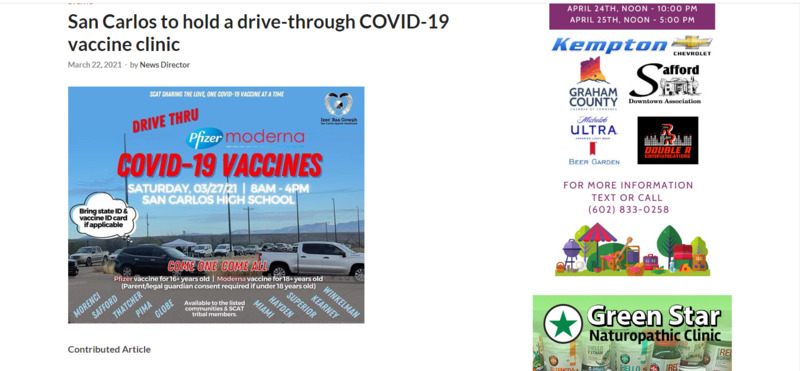 2021-03-21
2021-03-21San Carlos (AZ) to hold a drive-through COVID-19 vaccine clini6c
March 22, 2021 - by News Director Contributed Article SAN CARLOS – The San Carlos Apache Healthcare Corporation is proud to present a COVID-19 vaccine drive-through clinic for SCAT members and their family and friends of the surrounding communities of Globe, Miami, Superior, Hayden, Winkleman, Kearny, Pima, Thatcher, Safford, and Morenci. Our SCAHC Vaccination team will be administering the Pfizer and Moderna vaccine at the San Carlos High School, on Saturday, March 27, from 8 a.m. – 4 p.m. No appointment is necessary. For the Pfizer vaccine, those receiving it must be 16 years of age or older (must have a parent/legal guardian consent if under 18) For the Moderna vaccine, those receiving it must be 18 years of age or older. Please remember to bring your state ID. There is no charge for the vaccine. -
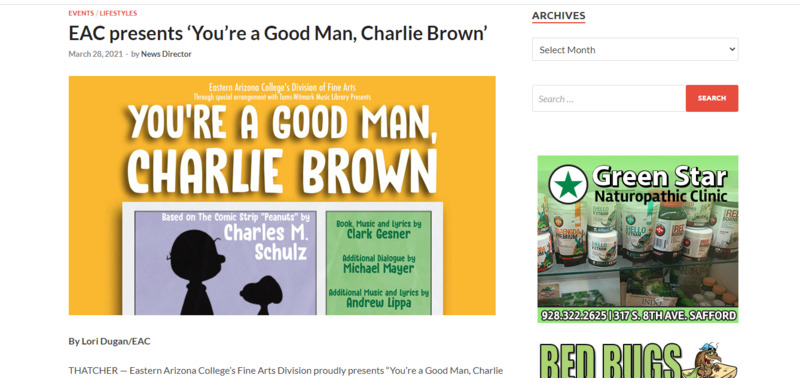 2021-03-28
2021-03-28COVID-19, Social Distancing, and College Theater in Thatcher, Arizona
By Lori Dugan/EAC THATCHER — Eastern Arizona College’s Fine Arts Division proudly presents “You’re a Good Man, Charlie Brown” from April 7 – 10 at 7:30 p.m. in the Fine Arts Auditorium, with the understudy performance taking place on April 8. General admission tickets are $5 for adults and are on sale now at the EAC Ticket Office. Call (928) 428-8228 for more information. EAC employees and students can attend for free. Due to COVID-19, social distancing is in place to accommodate safe spacing. Masks are required. You’re a Good Man, Charlie Brown synopsis The musical, based on the wildly popular Peanuts comic strip by Charles Schulz, is probably best described as an average day in the life of Charlie Brown. It is made up of little moments, from Valentine’s Day to baseball season, from wild optimism to utter despair. The familiar cast of characters is there, from Lucy and Linus to Schroeder, Sally, and, of course, Snoopy. The production explores what it means to be a good person, prompted by affirmations from Charlie Brown’s friends. These compliments set Charlie Brown on a journey of self-discovery as the audience follows him and his friends through a day of adventure and trials. Musical numbers include “My Blanket and Me,” “The Kite,” “The Baseball Game,” “Little Known Facts,” “Suppertime,” and “Happiness.” The play spans the months between Valentine’s Day and Beethoven Day, following the characters in their optimism and utter despair. “’You’re a Good Man, Charlie Brown’ is a crowd-pleasing classic for all ages,” said Chase Moore, EAC Musical Theatre director. “Anybody who’s a Peanuts fan will relive lots of fun memories from the comic strip.” Behind the production The production is directed by Dr. Dale J. Young, and features set designs by Greg Owen, both EAC associate professors of theater arts. Music is under the direction of Chase Moore. The production is choreographed by Rena De La Cruz, with costumes designed by Timilee McNair. Clark Gesner created the book, music, and lyrics for “You’re a Good Man, Charlie Brown”, with additional dialogue by Michael Mayer and additional music and lyrics by Andrew Lippa. Winner of two Tony Awards, five Drama Desk Awards, and an Outer Critic Circle Award, this production’s musing on life’s ironies and delights continues to resonate with audiences’ hearts. Theatre Arts at EAC You can shine in the spotlight at EAC! In the Department of Theatre Arts, students take part in dynamic shows and emerge as artists for the next step in their careers. “Our graduates are successful all across the country,” said Dr. Dale J. Young. “Some of the roles they hold are teachers, managers, actors, playwrights, directors, administrators, MFA graduate students, and the list goes on.” Students interested in this area of study at Eastern Arizona College enter the Associate of Arts Program in Theatre Arts www.eac.edu/Academics/Programs_of_Study/Theatre/. This program offers dynamic learning opportunities in acting, stagecraft, scene design, stage make-up, costume design, play analysis, and more. This curriculum meets the targeted requirements for the first two years of a bachelor’s degree program at a college or university. -
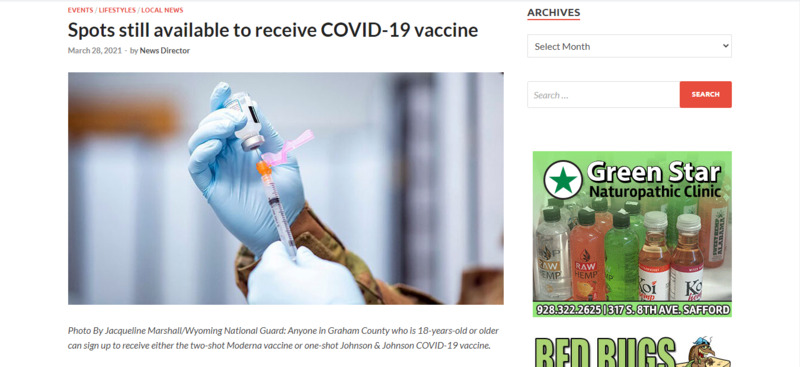 2021-03-28
2021-03-28Graham County (AZ): Spots still available to receive COVID-19 vaccine
Staff Reports SAFFORD – While some in other states attempt to bribe or lie their way to the front of the vaccine lines, that isn’t necessary for those in Arizona. The state has opened its registration to receive a COVID-19 vaccine to anyone 16-years-old and up for the Pfizer vaccine, and anyone 18-years-old and up for the Moderna and Johnson & Johnson vaccines. In Graham County, the Graham County Department of Health and Human Services has advised that there “are many appointments still available” to receive the Moderna vaccine. Anyone 18-years-old and up may schedule an appointment at www.graham.az.gov. The Graham County Health Department Vaccination Center is located in Downtown Safford at 627 W. Main St. In addition to the Moderna vaccine, a vaccination clinic for the one-dose Johnson & Johnson vaccine is also available to any Graham County resident who is 18-years-old or older. A vaccination clinic for the Johnson & Johnson vaccine will be held Friday, April 16. Register for an appointment at www.graham.az.gov. For any additional questions contact the Graham County Department of Health and Human Services at 928-428-0110. -
 2021-03-09
2021-03-09Oral History with a Rural Church Pastor
Abstract: Josh Colson grew up in Southern Illinois. He attended Welch College, earning a BS in Christian Ministry and an MA in Theology. Additionally, he is currently a student at Vanderbilt Divinity School, pursuing an MTS. Mr. Colson is currently the pastor of Brandon’s Chapel Free Will Baptist Church in Bumpus Mills, TN. The church is part of a small rural community, being in one of the smallest counties in middle Tennessee. In addition, Mr. Colson is the Faith Representative for the community health board. In this interview, Mr. Colson recounts the effects COVID-19 has had on his duty as a member of the clergy, his congregation, and his community. -
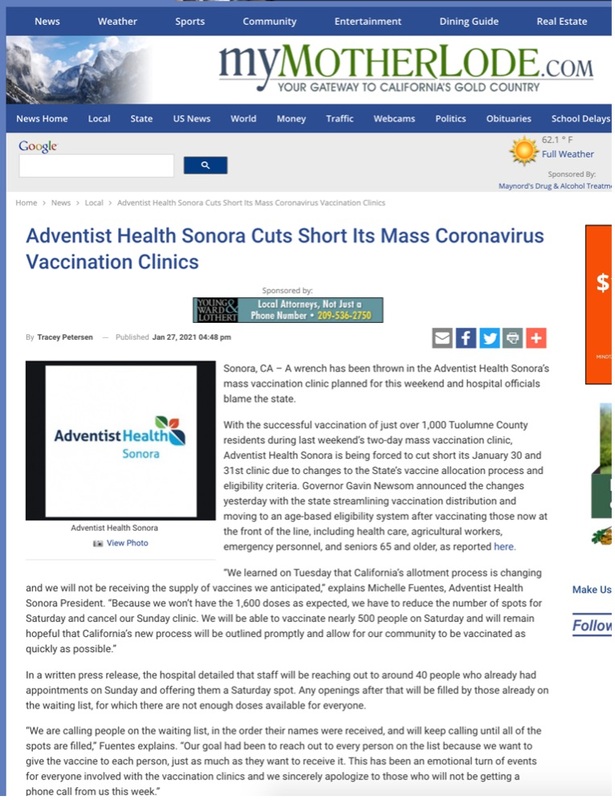 2021-01-27
2021-01-27Adventist Health Sonora Cuts Short Its Mass Coronavirus Vaccination Clinics
This article addresses the issues my hometown is having with their vaccination process. While I do know several individuals who were able to receive the vaccine before the clinics were cut short, this is disappointing to those who had not yet received the vaccine. My hometown is a small community with many older residents, so it is important for the health and well-being of those in the area that the vaccination process happens as quickly and as cleanly as possible. Hopefully the new approach to this rollout is successful, and those eligible will receive the vaccine. -
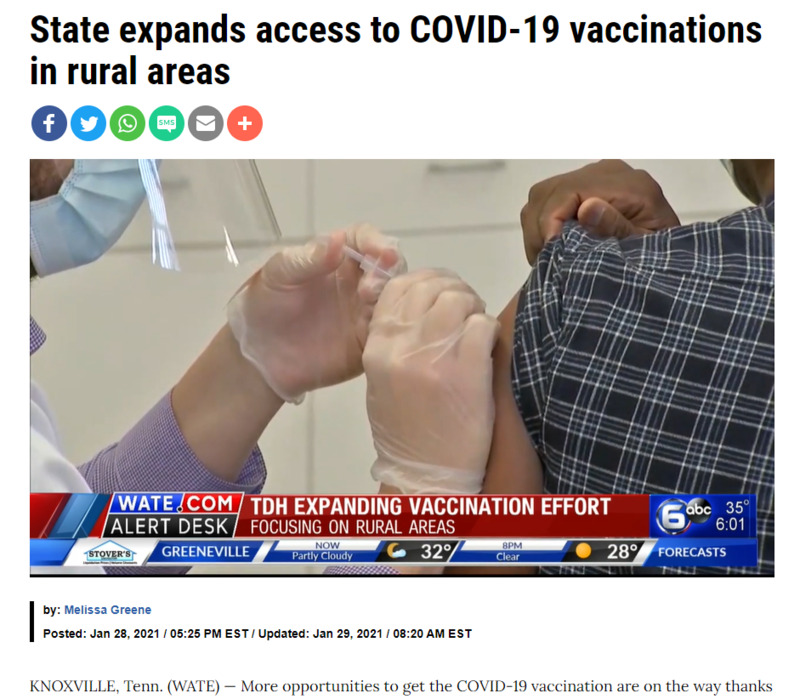 2021-01-28
2021-01-28State expands access to COVID-19 vaccinations in rural areas
In Tennessee, the state has announced new partnerships with rural pharmacies to more effectively reach the elderly outside of urban areas. This particular article focuses on East Tennessee and the rural counties surrounding the Knoxville metropolitan area. This is great news to those who do not live in cities as Tennessee is a mostly rural state. For some elderly people, they would potentially have to drive two hours to get to the city to get a vaccine. However, because of this new partnership, it will make it far easier for those in rural areas to receive the COVID-19 vaccine. -
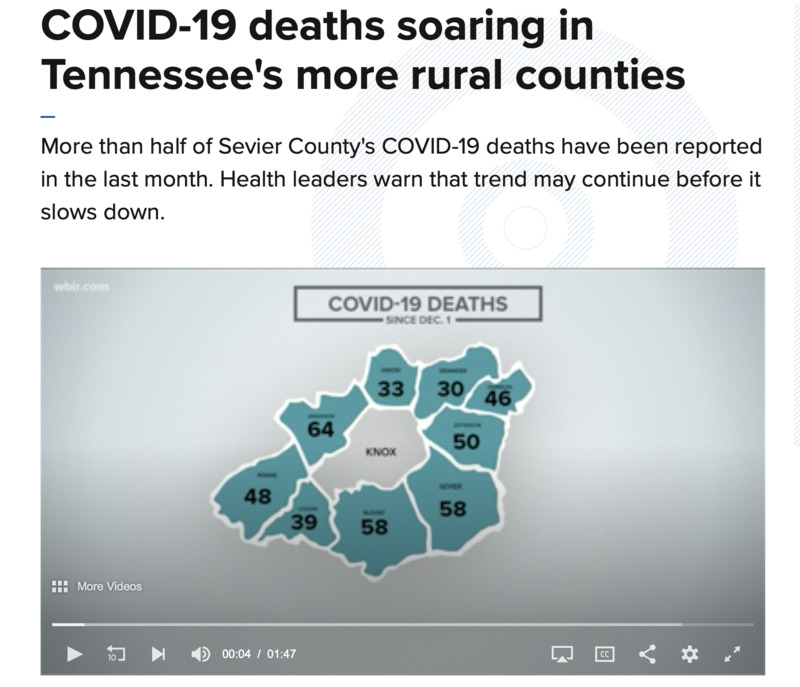 2021-01
2021-01COVID-19 deaths soaring in Tennessee's more rural counties
Over the past several weeks, Knox County and the rural counties surrounding Knox have been hit particularly hard by the pandemic. Tennessee and its rural areas were not hit hard initially by the pandemic, but have become a major area for concern as of late. -
 2021-01-24
2021-01-24SE NM’s Hospital COVID-Bed Capacity
This information displayed on this webpage contains an interactive map with corresponding data summary of the dedicated COVID beds and general capacity of hospitals in southeastern New Mexico for January 24th, 2021. This snapshot demonstrates a reasonably live and present condition of the availability for urgent and emergent COVID medical care within that geographic region and at that date and time. -
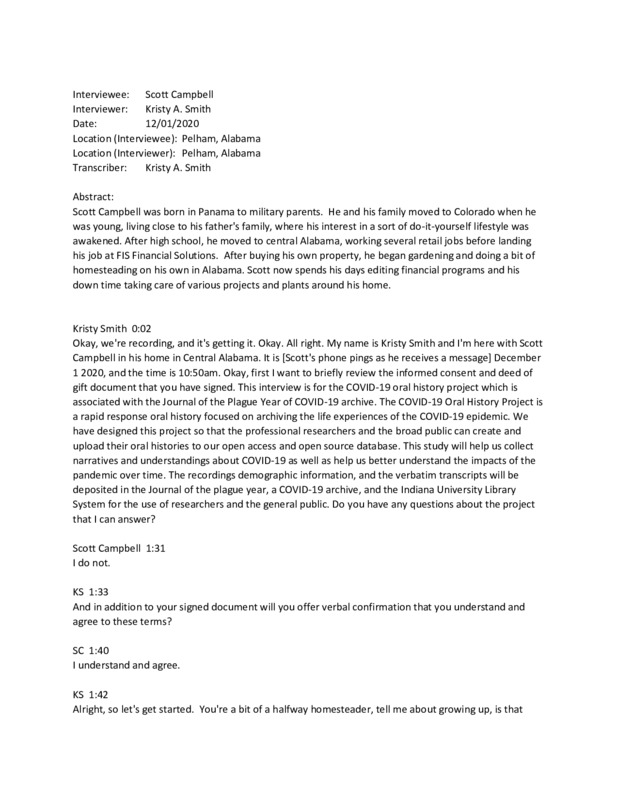 12/01/2020
12/01/2020Scott Campbell Oral History, 2020/12/01
Scott Campbell was born in Panama to military parents. He and his family moved to Colorado when he was young, living close to his father's family, where his interest in a sort of do-it-yourself lifestyle was awakened. After high school, he moved to central Alabama, working several retail jobs before landing his job at FIS Financial Solutions. After buying his own property, he began gardening and doing a bit of homesteading on his own in Alabama. Scott now spends his days editing financial programs and his down time taking care of various projects and plants around his home. -
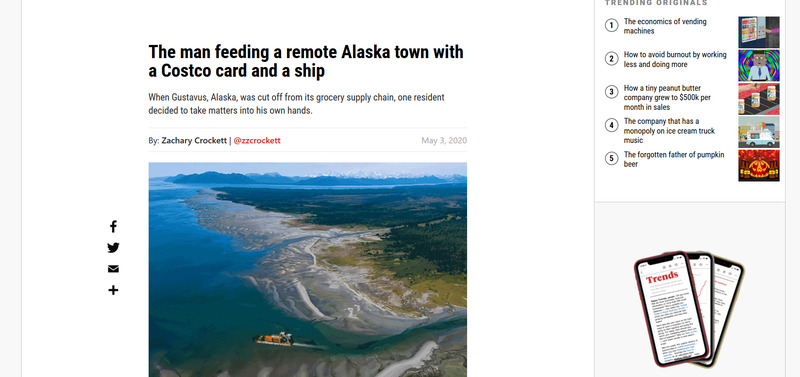 2020-05-03
2020-05-03" The man feeding a remote Alaska town with a Costco card and a ship " - The Hustle
The advent of COVID-19 has made it more difficult for isolated, rural communities to maintain access to basic necessities such as food, water, and personal care products. In an article for the Hustle, journalist Zachary Crokett recounts the story of a Gustavus, Alaska grocer named Toshua Parker, who has taken it upon himself to supply the needs of his fellow townspeople in a time of crisis. Through the use of a shipping freighter, business connections, and a trusty Costco membership card, Parker has mostly succeeded in supplying the community's consumer needs and has made his business, Toshco, an economic pillar of Gustavus. The success of Parker's small, rural business in the face of COVID-19, according to Crockett, is representative of a "renaissance" of rural businesses, which are an important component of supplying a town's consumer needs. Without these businesses, isolated rural communities such as Gustavus would have a harder time enduring the pandemic relative to communities with robust economic centers. -
 2020-07-20
2020-07-20Rural Rainbow
My aunt's photo of a rainbow on her dairy farm in rural Wisconsin. It shows how a lonely and quiet area in rural Wisconsin during the midst of a pandemic can have beautiful parts to it. -
2020-10-03
Eating in Front of a Mirror
Pre-Covid I already lived an isolated life, both physically and due to pervasive anxiety. I would spend weeks pushing myself, go inside the store, talk to three people at yoga, text four people, a million little social tasks that I did to keep my human animal happy. I live in a rural area, work part time at a library, and survive in a sort of genteel poverty. About every three months I'd drive to visit an old friend. Beyond customers at the library and polite friendships with coworkers, that was the only social interaction I really had. Stage one of the pandemic and my workplace closed, we were furloughed. Still paid. And after a single massive shopping trip at the end of March I just stayed home. Really stayed home. I was lucky, I'm already an introvert, have a home on acreage, pets. It wasn't great, but I was comforted knowing so many people were quietly going through the same thing. Then George Floyd was killed and I was called back to work a week later. This was the worst time so far. The building was closed and yet staffed, so we sat surrounded by clorox while people banged on the windows and cursed us. The pointlessness of it, we were only there so our employer could qualify for the PPP money. The anxiety of each coworker potentially being ill. And then, in the lull of work, the many many political opinions of all my white coworkers. I stayed silent, the lone POC, but I can assure you, I now detest them all. This phase ended when my boss got covid an ill-advised vacation to the Gulf. Coming back from our isolation I entered phase 3 of my pandemic. I now hate all my coworkers and view them as existential threats. Due both to their extremely foolish behaviors and their racism. They attend 200 guest count weddings, take discounted flights, and attend funerals. I try to work around them, taking vacation days to avoid them directly after they return. I have moved my desk out of the shared office and directly into the main room of the building. We are fully open again. Masks are not required. It is possible to drive around my small town and see not a single sign of the pandemic. The local diner which has flouted all the mild restrictions since April still has their sign out front, "Our Fried Chicken is to Die For!" I've started to feel mildly insane for still isolating, for still wearing a mask. But I'm also used to having the sole dissenting opinion in the room. For now my plan is to just not get sick, there's no plan if I do get it. I just go home and spend another weekend eating in front of a mirror, and sleeping with a hot water bottle to try and quiet my lonely human animal. -
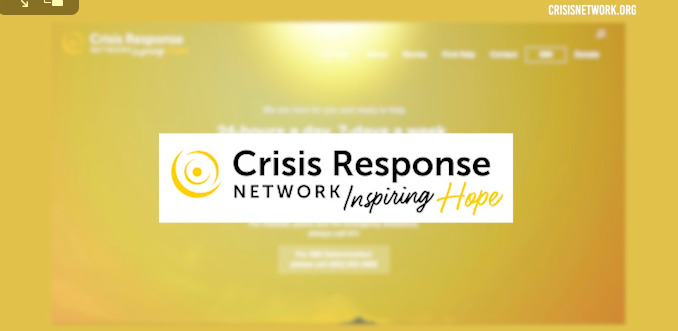 2020-08-14
2020-08-14Rural Arizonans gain more access to mental health resources, but only if they have an internet connection
Sarandon Raboin/Luce Foundation: Southwest Stories Fellowship -
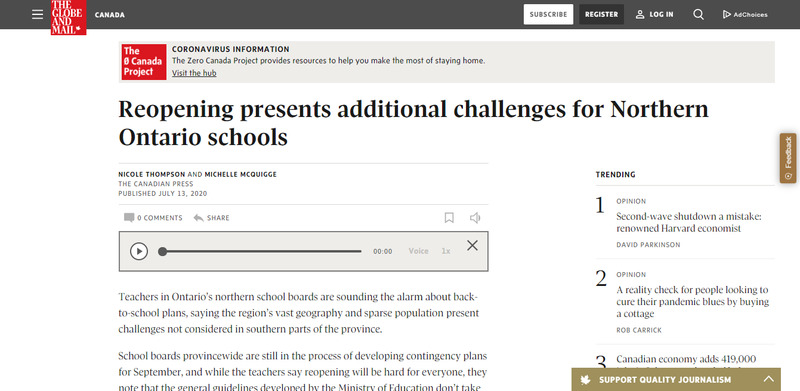 2020-07-13
2020-07-13Reopening presents additional challenges for Northern Ontario schools
"In one school, she said, there’s one full-time teacher, a part-time teacher and an education assistant. There’s no administrator, which raises a new host of problems during a pandemic. “'When there’s no administrator on site, and a kid gets sick, what do you do?' Douglas said. 'Who’s gonna be responsible for that child?' "But the barriers to remote learning are also greater up north, she said. “'A lot of us don’t have Wi-Fi abilities at our homes,' Douglas said. 'We pay an exorbitant amount of money to get Wi-Fi. And for us to do online learning, it’s been a challenge for many members. I’ve had members who have paid upwards of $700 for their Wi-Fi, just to do the distance learning.'” -
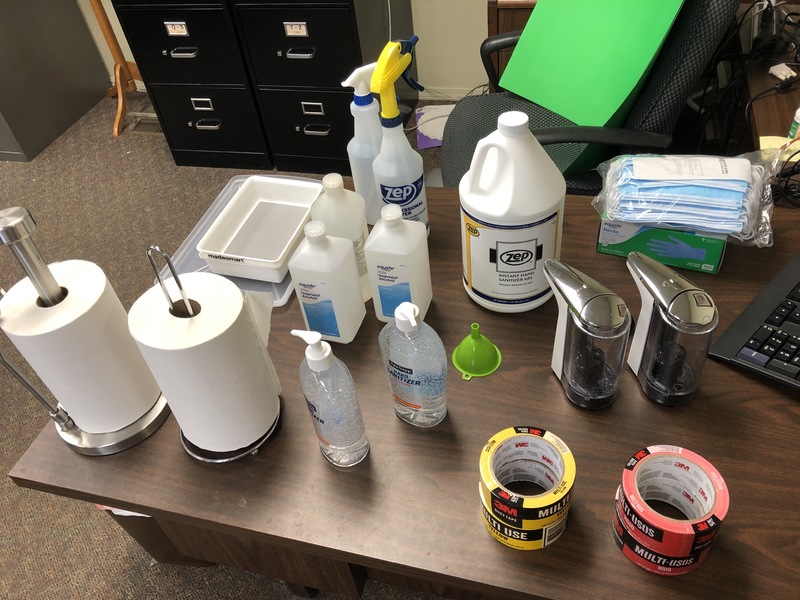 2020-06-14
2020-06-14Preparing for the Public Again: Supplies Needed for Reopening Oklahoma Business in Phase 3 During COVID-19
Starting June 1st, Oklahoma Governor Stitt's Phase 3 of Oklahoma's reopening began. The Richey Insurance Agency of Blanchard, Oklahoma has still not opened partly due to the company's employees being in the vulnerable categories. One of the other reasons is the difficulty in obtaining much needed cleaning supplies and the creation of new office protocols to maintain CDC suggested safety measures. Being a small independent business in a rural area, we are not given strict corporate or state regulations to enact. Instead, we are reliant on state and CDC information as well as our own ingenuity of how to best observe these suggestions. Some of the items that we've recently obtained include: plexiglass barriers for two desks, new easily cleanable office chairs, automated hand sanitizer stations, 70% isopropyl alcohol for spray bottles, bulk bottle of hand sanitizer, brightly colored tape for marking distancing locations on the floor, emergency masks, emergency gloves, and document exchange trays. All of these items are newly purchased and weren't necessary before COVID-19. The barriers will help maintain sanitary work spaces and create social distancing gaps. The chairs are especially important because they are replacing the previous cloth chairs. These new chairs' entire surface is either vinyl or metal, making it easier to clean after every customer. The social distancing rules will be a maximum of four customers in the office. This is approximately one third of its usual heavy customer points normally. All of these changes are based on a downward progression of COVID-19 cases to prevent our employees from unnecessary risk. Right now, three of the employees work from home and will continue until the office is officially open. Currently the new COVID-19 cases are on an upward trend in Oklahoma, with 225 new cases on Saturday June 12th, the single largest day since the beginning of the outbreak. With numbers like these, Phase 3 seems to be more of risk than we had planned. Much of the ramp up to open will be stalled until Oklahoma numbers show a significant decline. Personal story submitted for the #ruralvoices collection. Contributed by Clinton P. Roberts, curatorial intern for Arizona State University, HST 580. -
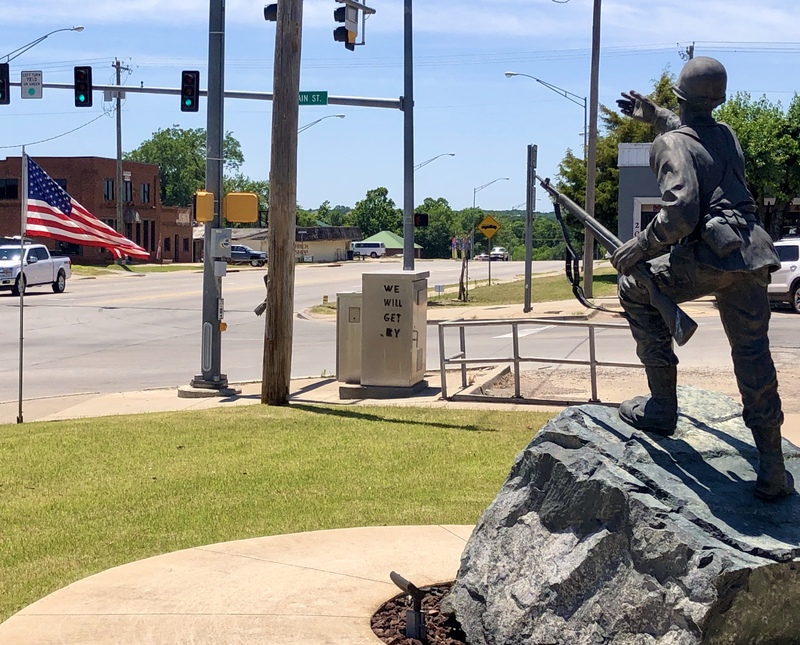 2020-06-14
2020-06-14Message of Hope Left on Control Box Near a Congressional Medal of Honor Recipient Memorial
On June 16th I took a picture of a message that is on a control box for the traffic light on Main Street in Blanchard, Oklahoma. The message is located near a memorial statue that was dedicated to Congressional Medal of Honor recipient Tony K. Burris for his valor during the Korean War. The message of hope was first spotted in early April when the lock downs of COVID-19 were well underway. The message of hope reminds the local residents that hard times have been witnessed before and like those times, "We Will Get By." The message is located on the North East corner of the intersection between State Highway 76 and U.S. Highway 62; many people drive past this prominent intersection daily. The message itself appears to be spray painted with a stencil. Since the message's arrival, no one has attempted to remove it - despite a strict city stance towards graffiti. This message seems to resonate with locals for the sheer fact that it has remained in its location past several public events in the general area that normally would've caused a reaction to have any other graffiti removed. The framing of the sign, the flag, and the statue in the same photograph really resonates with me. This is the way rural people see and feel the sense memory of past sacrifices, the resiliency that resides in hope. -
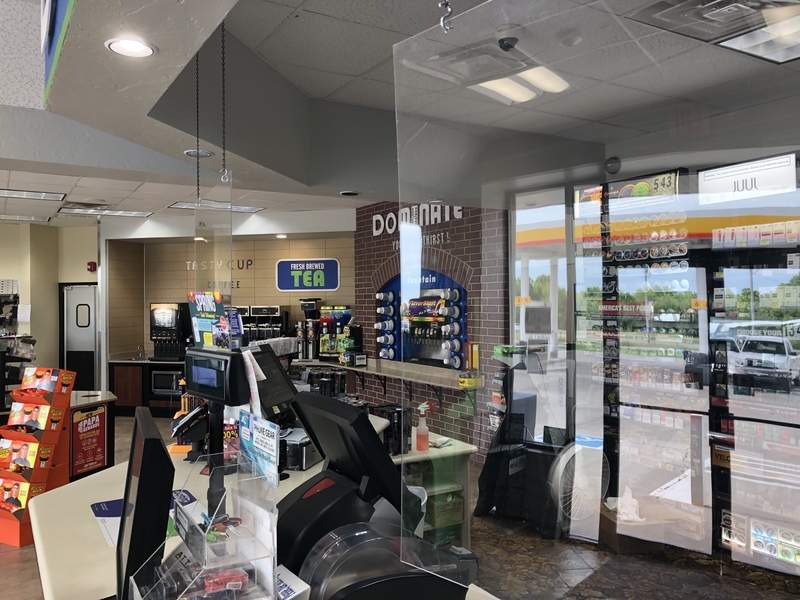 2020-05-31
2020-05-31Plexiglass Barriers Are Becoming the Norm for Businesses Re-Opening During COVID-19
The photograph depicts two plexiglass barriers suspended over counters at a Domino gas station in Blanchard, Oklahoma. These barrier are suspended from wire chains connected to the ceiling. These barriers act as a "sneeze guard" much like similar system have placed in restaurants in the past. Much like CDC recommended social distancing, these barrier act to protect employees and customers while they stand closer than six feet for transactions. This particular barrier at Domino was installed specifically in response to COVID-19. Local businesses, such as Domino, Spencer's Grocery, Subway, and China House were just a few of thoes that had been observed with these plexiglass barriers installed since COVID-19. In addition, local state and federal government offices such as Gayla's Tag Agency and the Blanchard Post Office had made the transition to these plastic protective barriers as well. As many locations make the shift to re-opening, the plexiglass barrier has become a growing standard of how people do face-to-face business, even in rural communities. Personal story submitted for the Rural Voices collection. Contributed by Clinton P. Roberts, curatorial intern for Arizona State University, HST 580. -
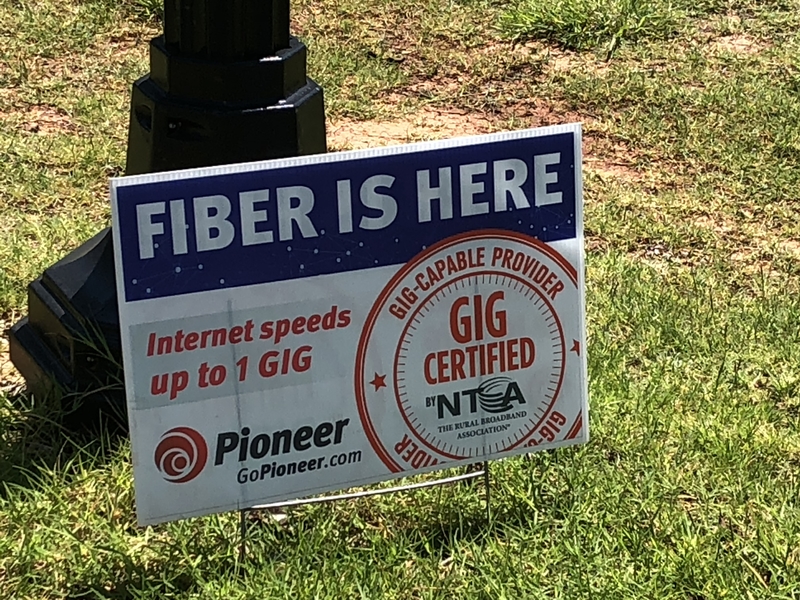 2020-05-31
2020-05-31Internet Upgrade Occurs Just as COVID-19 Fears of Contact with Others and Staying at Home Heightens
The sign depicts advertising to encourage people to sign up for Pioneer Telephone's Fiber Internet in Blanchard, Oklahoma. As a rural community, we had been waiting for fiber access for quite awhile. We are close enough to the Oklahoma City area to see the capability grow, but were too far away to benefit until recently. The local company Pioneer promoted the coming of the internet upgrade for the past year. I had already signed a contract to receive this upgrade in October of 2019, but by chance my neighborhood's service was ready until March 2nd just as COVID-19 concerns were starting to become more widespread. On March 25th state-wide restrictions put in place by Governor Stitt's executive order closed non-essential businesses, limited public gatherings to no more than 10 people, and enacted the "safer at home" protocol for those over 65 or with underlying medical conditions. During this time period I had restricted my exposure to just a few of my closest family in order to protect the older members. Pioneer called the last week of March to set a date, just as the biggest restrictions were occurring. I decided to move forward not realizing how the idea of a person entering my house would change my thoughts just a week later. The utility companies often send people to do work orders, which had never bothered me in the past. When Pioneer arrived on April 3rd to install the upgrade, I began to realize that this would feel very different. For the past month, we had postponed family nights, group dinners, and outings. During that time, we wouldn't dare answer the door for a sales person or go to grocery stores without a mask. The entire month was mostly just Kelly and I in my home with few outs beyond my work or my grandmother's house. The process was somewhat stressful because of how much the COVID-19 situation had changed since signing up for the service. When the man arrived, I noticed he was cautious about how he entered and the social distancing he kept from us. He did much of the organizing of his equipment in my driveway from his pickup. He was a contract worker for Pioneer and his helper was a young man of about eighteen. The two came inside, with the young man doing most of his work from my attic. This was the first time someone other than a few close family members had entered my house since the executive order. His distancing and professionalism helped alleviate many of the concerns. Once he left we used sanitizer wipes to clean door handles, just to be safe. The time he was in my house was cordial and friendly, but it was far from the normal way rural people would act in circumstances like this in the past. There were no handshakes which would've been a standard practice for many people in these encounters. This situation depicts the feelings of uncertainty and the changing of routine habits that occurred during COVID-19. Many of these changes were gradual, subconscious and only visible once we reflected upon them. Personal story submitted for the #ruralvoices collection. Contributed by Clinton P. Roberts, curatorial intern for Arizona State University, HST 580. #HST580 #ASU -
 2020-05-29
2020-05-29Healing Hands Community Clinic Response to COVID-19
Sharon Annesley of Blanchard, Oklahoma tells the story of how her rural church created a non-profit community clinic. She also details how this small rural clinic adapted to the COVID-19 pandemic. Her text document story chronicles how the clinic attempted virtual visits but was limited by technological access. Sharon details that clinic patients often elderly or generally without resources, had limited internet access which produced new obstacles for patients of the clinic. She also articulates the ways the clinic attempted to address these difficulties as they wait to reopen the clinic to the public in June. Text document authored by Sharon Annesley, Member of New Beginnings Church - Blanchard. The story is titled under the heading "HEALING HANDS COMMUNITY CLINIC RESPONSE TO COVID-19" (May 29, 2020) The story features photographs of the community clinic. -
 2020-05-27
2020-05-27New Beginnings Church Community Garden Started Amid COVID-19
Sharon Annesley of Blanchard, Oklahoma tells the story of her rural church starting a community garden amid the COVID-19 pandemic. Her text document story chronicles how the church received the land and how they decided to create a garden that not only served their congregation but anyone in the community that wanted access. Sharon details what members contributed to the maintenance and what vegetables were growing there. She also articulates concerns that members expressed about potential food shortages and a garden's ability to address those concerns. Text document authored by Sharon Annesley, Member of New Beginnings Church - Blanchard. The story is titled under the heading "NEW BEGINNINGS CHURCH COMMUNITY GARDEN STARTED AMID COVID-19" (May 27, 2020) The story features photographs of the church garden. Sharon Annesley hand-submitted the physical copy of this document for submission to Clinton P. Roberts for the #ruralvoices collection. Contributed by Clinton P. Roberts, curatorial intern for Arizona State University, HST 580. -
 2020-05-28
2020-05-28New Beginnings Church - Adapting Church Services Amid COVID-19
Sharon Annesley of Blanchard, Oklahoma tells the story of her rural church and how it adapted their services during COVID-19. Her text document story chronicles the ways they were affected and adapted to the pandemic. This includes transition to virtual church services and transitions back after Oklahoma's loosening of restrictions upon churches in May of 2020. The church eventually created separate services between two church locations to allow the elderly and high risk members to attend exclusively in a safer environment than the rest of the lower risk members. This text document is authored under the name "Sharon Annesley, Member of New Beginnings Church - Blanchard, Blanchard, Oklahoma." The story is titled under the heading "NEW BEGINNINGS CHURCH - ADAPTING CHURCH SERVICES AMID COVID-19" (May 28, 2020) The story features a photograph of the church. Sharon Annesley hand-submitted the physical copy of this document to Clinton P. Roberts, curatorial intern, for submission into the #ruralvoices collection. Contributed by Clinton P. Roberts, curatorial intern. -
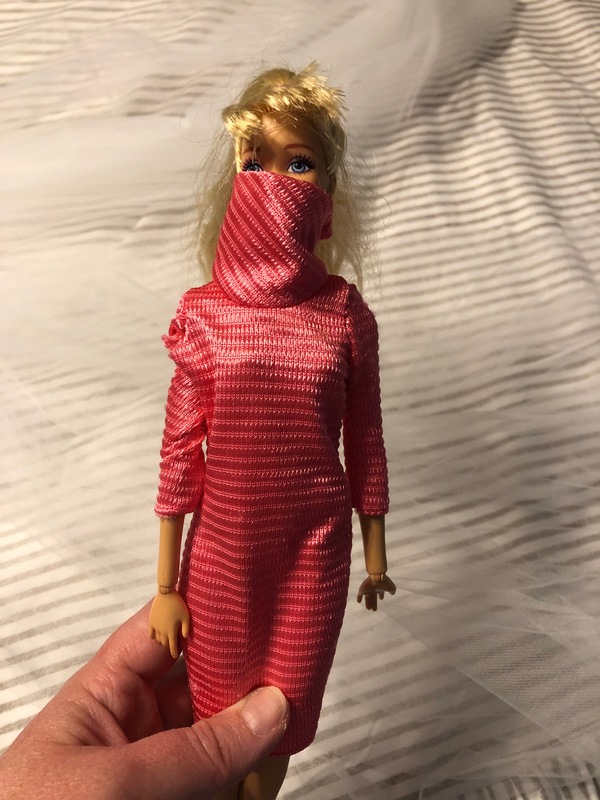 2020-05-29
2020-05-29Interview with 5-Year-Old Emily about her Doll "Corona Barbie" and Missing School During COVID-19
This is an interview from May 29th 2020 with five-year-old Emily of rural Oklahoma about COVID-19. She talks about her doll she named "Corona Barbie" in which she used a high neck dress to cover the doll's mouth like a mask. Emily also talks about missing family vacations, missing school, and especially missing her teacher Mrs. Looper. Growing up in a rural area, she was most excited to be able to share videos of her chickens hatching via Facebook Messenger Kids during the pandemic. Photograph included that inspired the interview is of the actual "Corona Barbie" mentioned in the interview. The photograph was taken on March 16th, 2020. Submitted for the #ruralvoices collection. Contributed by Clinton P. Roberts, curatorial intern for Arizona State University, HST 580. #HST580 #ASU -
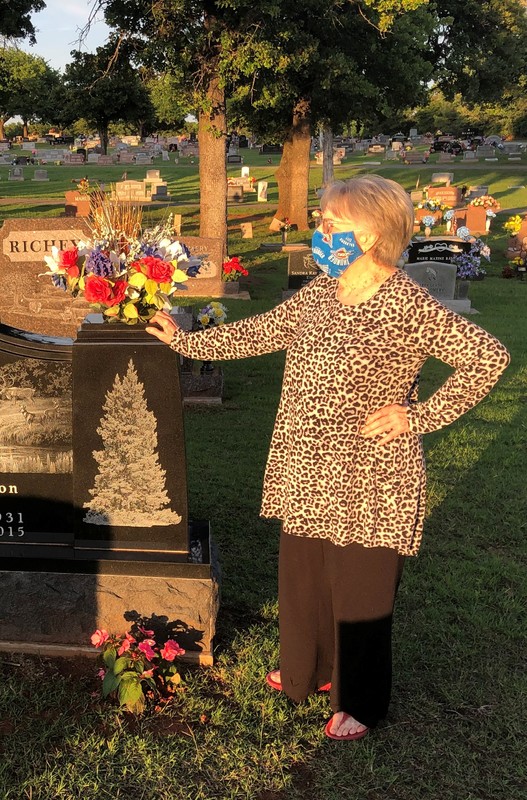 2020-05-26
2020-05-26Grandmother Grateful for Opportunity to Visit Husband's Grave for Memorial Day During COVID-19
Jo Ann of Blanchard, Oklahoma visited her husband's grave on 05/26/2020. She was taken by her grandson and his girlfriend to visit his grave. Before the restrictions of COVID-19 set in March, Jo Ann had visited her husband's grave almost daily for over five years. Since the restrictions of the pandemic, she had only visited three times. She said she was very grateful to be able to spend some time with her husband who had been a veteran in the Korean War. Jo Ann said she was looking forward to this pandemic ending so she could resume her normal visits. Submitted for the #ruralvoices collection. Contributed by Clinton P. Roberts, curatorial intern for Arizona State University, HST 580.
